2, Semester 2,
HONI SOIT

Remy Lebreton & Victor Zhang Analysis, Page 11
“A caged bird can still sing”: The BK-16’s Song of Resistance Putting down the roots
Purny Ahmed Feature, Page 6
Ink and Sovereignty: Erasure and Resistance in NSW Women’s Prisons
Dr. Miniature Malekpour Analysis, Page 10


Honi Soit operates and publishes on Gadigal land of the Eora nation. We work and produce this publication on stolen land where sovereignty was never ceded. The University of Sydney is a colonial institution. Honi Soit is a publication that prioritises the voices of those who challenge colonial rhetorics. We strive to continue its legacy as a radical left-wing newspaper providing students with a unique opportunity to express their diverse voices and counter the biases of mainstream media.
Yearning. The feeling of intense longing for something. Often associated with romance, slow burns, and 60+ chapters of pining of AO3, I wanted to deviate from what we thought yearning was and recognise what is truly at its heart: community. It seems, what we want most is to become a little less lonely, and a little more connected, in our big world.
I’ve been thinking about the reason I write during the making of this edition. What purpose does it serve? Who does it reach, if it does reach anyone? In the middle of a busy Sunday layup, I realised that the reason any of us write is to connect. To be understood, but to also say that you understand.
My feature on page 6 is a sister article to the feature I wrote last year, Pulling out the roots. I hope anyone who reads it and finds themselves relating, that you find your people one day, let them love you, and, finally, leave your burning house.
Anyways.
In this edition, Shayla Zreika looks at Western individualism and Eastern community on page 16. On page 10, Dr. Miniature Malekpour analyses incarceration and Indigenous culture. On page 15, Will Winter brings back house parties and you’re invited.
On our puzzles page (right at the back), we have a little fill-in-the-blank box for you to write what it is that you’re yearning for today. Write your deepest desire and use it as a time capsule or a wishing well, whichever you would like.
To my community, thank you. I’ve stopped yearning (...mostly); you have all given me everything I could want.
Love, Purny


Editors
Purny Ahmed, Mehnaaz Hossain, Ondine Karpinellison, Ellie Robertson, Imogen Sabey, Charlotte Saker, William Winter, Victor Zhang
Front Cover
Bipasha Chakraborty
Ahmed, Sath Balasuriya, Audrey Hawkins, Mehnaaz Hossain, Remy Lebreton, Dr. Miniature Malekpour, Ella McGrath, Kiah Nanavati, Pride in Protest, Sabrina and Beth, Charlotte Saker, Jessica Louise Smith, Ananya Thirumalai, Will Winter, Victor Zhang
Artists
Purny Ahmed, Ellie Robertson, Imogen Sabey, Charlotte Saker, Will Winter
Letter to the Editor
Dear Editors,
When I was in year twelve, there was only one History Extension class. There were just two students, including me. I’d never before had a class like it—with deep study of the curriculum subjects, tangents into other topics, and rollicking conversation. I learnt more in that class than any other, and I enjoyed it more than any other. It was basically a (very small) seminar. It was, I thought at the time, a taste of a university education.
Imagine how I felt when I got into uni the next year. Instead of seminars, I was thrown into classrooms larger than any I had seen in primary or high school. Many or most students, I found, never read the readings. I had to take “open learning environment” (what does that mean?) units on “(Im)Politeness in Global Society” and other great subjects. The teachers were so overworked they didn’t have the time to properly mark your assignments. And I had to pay through the nose to enjoy the privilege of this experience.
How did universities get here? If readers want to know, I recommend they read Victor Zhang’s “Tale of the Corporate University”, Parts I and II. In just two articles, he traces the rise and fall of universities since World War II, when the Federal Government got involved with them. He starts with Robert Menzies, rating him highly (probably too highly) for increasing Commonwealth funding for universities and implementing other reforms. He commends the Whitlam Government for its abolition of tuition fees. That did much to, as Whitlam himself put it, “strike a blow for the ideal that education should be free.”
He covers the vandalism of the neoliberal era. The rot started with John Dawkins, Minister for Education in the Hawke-Keating Government, who introduced market-based reforms. In came HECS, managers galore, and casually employed academics. If we’re being generous, we can say that Government had good intentions but was misguided. If we’re being honest, we can say it was made up of fools, at least where tertiary education was concerned.
Like with so many other policy areas, the Howard Government took the bad ideas of the Hawke-Keating years and made them worse. It cut funding to universities. It lowered the HECS repayment threshold by nearly one-third. It introduced tiers to tuition fees.
Zhang set himself the task of, as he put it, “condensing 83 years of history, spanning 20 prime ministers.” He has just about managed to do that—and in doing so, shown that he knows more about universities than the people running them.
I’m looking forward to Part III. The current Education Minister has given Zhang plenty to write about.
Kind regards, Kristian Marijanovic, BA (2025)
WHAT’S ON?
QuAC Movie Night 13th of August, 6pm Queerspace
SASS Welcome Drinks 14th of August, 6pm Centro 86
The Doomslut Collective @ ‘Echoes: Sixty-Nine’ 14th of August, 12:30pm Verge Gallery
100th Anniversary of the Labor Club 15th of August, 6:30pm MacLaurin Hall
Diptych Whimsy 16th of August, 5pm
The Lord Gladstone Hotel
‘Adoration Gods’ Play Fundraiser 22nd of August, 7pm Alpha Gallery
Nationwide March for Palestine 24th of August, 1pm Hyde Park
Rumour Has It...

USyd Engineering Revue 28–30th of August Everest Theatre
USyd Law Revue 28–30th of August York Theatre
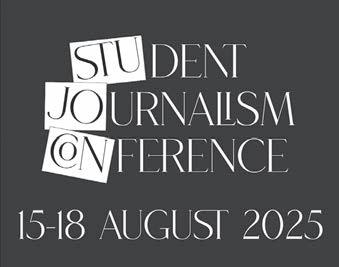

National student referendum on Palestine to be held on week of 28th August
On 7th August, Students for Palestine (S4P) Australia announced a national student referendum on Palestine, regarding the Labor government’s complicity in the genocide in Gaza. S4P announced the event via social media.
S4P is organising the event in collaboration with USyd Students for Palestine, Queensland Students for Palestine, and the NUS.
The referendum will take place on the week of 28th August at universities and tertiary institutions across Australia, including TAFEs.
The referendum will include the following two motions:
“Students censure the Australian government for its complicity to the genocide in Gaza. We demand an end to all weapons sales to Israel by Australia and Australian companies, and call for sanctions on Israel.”
“Students call on all Australian universities to end their complicity with Israel’s genocide by ceasing all partnerships with weapons companies.”
The referendum will be held mainly through student general meetings (SGM) across universities, although universities without strong student political bodies are still able to participate in the SGM by requesting an online ballot from the Palestine Action Group.
S4P said “Our governments and our universities have failed us and the people of Palestine. They continue to be complicit in the genocide in Gaza.
“We cannot be silent. We have to make our voices heard.”
The referendum comes amidst a raft of events led by S4P and the Palestine Action Group, including the historic March for Humanity on 4th August, the National Day of Action on 7th August, and the upcoming Nationwide March for Palestine on 24th August.
Shovan Bhattarai, SRC VicePresident, said to Honi “The National Student Referendum is the next big step for the student movement for Palestine. It will
give students the opportunity to vote no confidence in our own government and to demand an end to the ties between our universities and genocide.
“We know that a growing number of students oppose Israel’s genocidal war, and this is the perfect means to demonstrate that.”
Grace Street, SRC General Secretary, commented that “Students in 2025 are seen more as individual customers and recipients of the corporate university education than members and stakeholders of a university community. The student referendum will be a significant campaign that gets back to the roots of student
Imogen Sabey reports.
unionism, with students coming together to get organised and be vocal, and being at the centre of progressive social change at a time where our university is complicit in genocide and our student fees are supporting it.
“We hope it will carry on the tradition of loud and visible student protests across decades for social issues — against the Vietnam War, the Freedom Ride, and most recently our Gaza Solidarity Encampment.”
Students who wish to take part in the referendum can register their interest on the S4P website.
Academic’s Palestine flag confiscated; students raise flag on campus free speech crisis
As undergrad courses recommence, posters depicting the Palestine flag, emblazoned with the words “This flag has been banned by Mark Scott” have sprung up across campus.
Student leaders of university clubs and societies have pinned these posters along with other promotional materials to their Welcome Fest stalls in a display of solidarity with David Brophy, Senior Lecturer in history at the university.
Brophy announced on X that Vice Chancellor Mark Scott and Professor Lisa Adkins, Dean of his faculty, sent him an ultimatum to remove the Palestinian flag from the window of his office by this Monday, the first day of the semester.
The flag had been there since late 2023.
In the attached open letter response, Brophy wrote: “I’m sorry, but my conscience won’t allow me to comply.”
“In the weeks since Lisa’s email of June 26, by a conservative estimate Israel has killed some 4000 Palestinians. As you may be aware, an increasing proportion of these deaths now come from the deliberate starvation of Gaza’s population. I go through the day now with gruesome images of emaciated children running through my mind, and I have no confidence that we’ve seen the worst.
“At a time like this, ethical obligations far outweigh any ad hoc institutional policies, particularly those transparently
aimed at stifling opposition to an ongoing genocide.”
“…I’d like to ask you both to reflect on the moral weight of what you’re doing and withdraw the instructions to remove the flag.”
He went on to express concern that in “forcing a member of staff to remove a symbol of support for Palestinians,” they could be putting that staff member in a “morally hazardous position.”
“Whether or not they feel this now, they may come to regret such an action in the future, when – as is inevitable – the full scale of Israel’s barbarism is acknowledged by society.
“The only fair course of action, it seems to me, is that you take personal responsibility for this decision and remove my flag yourselves.”
Honi can confirm that as of Tuesday 5th August the flag has been confiscated.
On Monday, activist group Students Against War (SAW) launched a campaign to oppose USyd’s “ban” on Palestine flags, with the support of various clubs and societies.
From the Students Representative Council (SRC), the Disabilities Collective, Queer Action Collective, Wom*n’s Collective and Autonomous Collective Against Racism have put up posters at their stalls along Eastern Avenue.
Political groups showing solidarity include Labor Left,
Socialist Alternative, and Solidarity, and a spate of non-political groups, such as the Philosophy Society and the student publication PULP
After Brophy’s flag was taken down, three more Palestinian flags were sighted, draping from the windows of the Brennan MacCallum building.
The University’s new “flag policy” forbids flags representing “unlawful activities,” and those that are “inconsistent with our values,” or “inappropriate, dangerous or offensive.”
The University also forbids the displaying of flags within “indoor shared spaces”.
Recently, practices like postering and lecture announcements have also been heavily restricted by the University.
In a Wednesday media release, the University announced: “we have not banned Palestine flags from campus.
The flag was removed on the grounds that “unapproved flags of any kind can only be flown from University infrastructure on a temporary basis,” and that “the staff member could continue to display the flag in a non-shared internal space such as an office.”
In response to this statement, SAW convenor Angus Dermody said: “you brought the [flag policy] as part of a response to Palestine protests, have used it within one day of uni coming back to take down a Palestinian flag that has flown for almost
two years, and you expect us to believe this has nothing to do with Palestine?
“…are we only allowed to register our opposition to Israel’s genocide and your complicity in it if nobody else can see us do it”
SRC General Secretary Grace Street told Honi: “It’s really positive to see the widespread support amongst students for David Brophy and Palestine, and against the new flag policy, at Welcome Fest… more students than ever are getting involved to condemn the complicity of our institutions and government.
“Our strength to fight for Palestine and against repression is in our numbers, and I think this is why we have seen less of a crackdown from the University during Welcome Fest with Palestine-related materials and social media content.
“After many months of persistent actions and advocacy for Palestine and free speech throughout the SRC, NTEU, and activist groups, we can see sentiment changing on campus and students overcoming their fear of increasing repression from the University as Palestine faces a violent exacerbation of starvation, bombing, and settler violence.”
Convener of the on-campus Queer Action Collective Jesper Duffy said: “That flag [outside Professor Brophy’s office] has been there since the beginning of the genocide, and it’s ridiculous that the University has decided that we can’t identify with this country’s flag, this people’s flag.”
Ella McGrath reports.
Multiple international human rights organisations, including two Israeli groups, have contended that Israel’s actions in Gaza amount to genocide.
“The institution is effectively erasing the Palestinian identity,” he said, “they are insinuating that anyone who displays this flag is inciting violence even if they themselves are Palestinian.”
“I’ve walked past Brophy’s office a lot between classes and on my way home, and it always inspired me. And now it’s gone.”
Yesterday SAW called a “snap speakout” to protest the University’s “ban” on the Palestinian flag, which had around 50 students and staff attendees.
Speaking at the rally, Brophy noted that as there is no prohibition against wearing the Palestinian flag on a piece of clothing, “for the rest of the day… I’m going to wear the flag of a people facing genocide, a flag that symbolises resistance to apartheid and occupation.”
On Tuesday, another activist group Students for Palestine (S4P) held a vigil for Gazans killed by Israel, planting red ribbons on the lawns in front of the Great Hall, in and around Welcome Fest stalls.
S4P called a nationwide student strike for Palestine, attended by hundreds of students across the country today.
Hossain reports.
“Albanese’s phone call to Netanyahu does fuck all”: Students strike for Palestine Mehnaaz
On Thursday 7th August, Students for Palestine (S4P) Australia organised a National Student Strike for Palestine in Sydney Town Hall. S4P urged students to walk out of class in solidarity with the genocide in Gaza and had three key demands: for the Australian government to sanction Israel and end the genocide in Gaza; to stop the repression of Palestine activists; and for universities to cut ties with weapons companies manufacturing and providing weapons to Israel. Contingents attending the strike included groups from the University of Sydney (USyd), University of Technology Sydney (UTS), University of New South Wales (UNSW), Western Sydney University (WSU), and more.
Jasmine Al-Rawi (Students for Palestine Sydney University) opened the rally by speaking about the protest on Sunday 3rd August: “On Sunday, 300,000 people marched across the Harbour Bridge. We have made history… And we still have
seen no concrete commitments from our government to do anything that would actually help the Palestinians. I don’t know about you guys here, but I don’t remember demanding that Albanese have a phone call with Netanyahu. I remember demanding sanctions on Israel now.”
The first official speaker was Salma Elmubasher, UTS Palestinian Youth Society President, who spoke to the “relentless targeting” of Palestinians and Muslims. She emphasised the need for solidarity, saying “Palestinian and Muslim families in the crowd: you are not alone. Your existence is an act of resistance, and your presence is living proof that the Nakba never ended, but neither did our defiance.”
Bart Shteinmann (Jewish Council of Australia) spoke to the students about the significance of striking from their institutions: “[Y]ou honour the students of Gaza, who dreamt the same
dreams as you but have been living, and dying, in an unimaginable nightmare for 670 days… In doing so you call out the hypocrisy of your education institutions, that tell you to… learn and remember the Holocaust, but not oppose the one taking place today.”
Shteinmann talked to the protestors about the significance of 3rd August, as it marks Tisha B’Av, an annual day of fasting. He spoke to the Zionist weaponisation of historical atrocities to justify the current genocide: “I don’t see, in that day [Tisha B’av], some justification for a colonial ethno-supremacist project two millennia later… a holy birthright to a land that I am a stranger to. I see in that day, what the Rabbis of my faith saw in it for 2,000 years before Zionism, an ancient warning against sinat chinam, senseless hatred, and the evil it wreaks upon the world… the great irony of history, that Jews, who have suffered so much senseless hatred, dispossession and wanton violence, could one day do to another what was once done to us.”
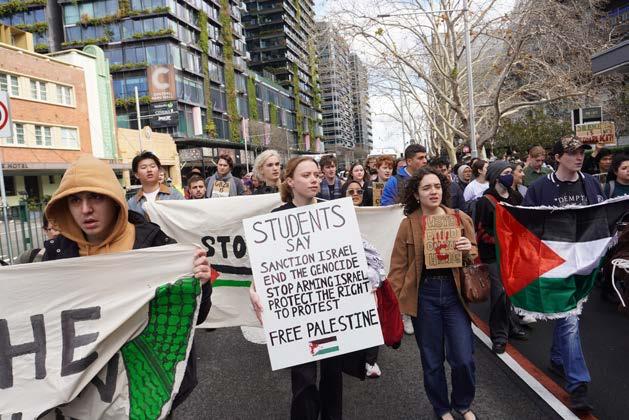
gotten so much worse. And it’s clear, even since then, since October 2023, that Israel doesn’t listen to words of condemnation and Albanese’s phone call to Netanyahu does fuck all. Even when world leaders have come out to finally admit that there is starvation and famine in Gaza, Israel still lies and claims that these are lies and AI generated images, which is absolutely shameful.”
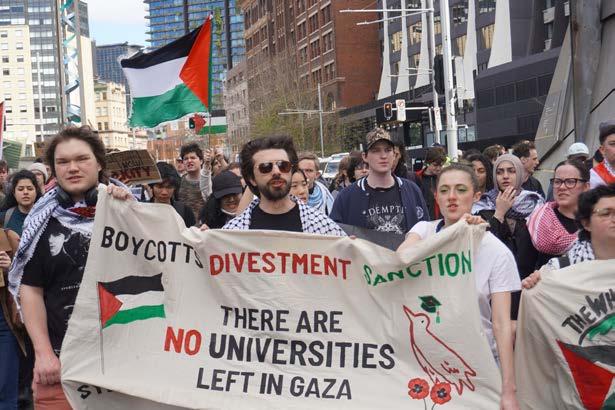
Grace Street from USyd Students’ Representative Council and BDS Youth spoke “Marching here with comrades that were holding a banner that I painted last year in October that says ‘There are no universities left in Gaza.’ It’s so outrageous to say that not only have things not gotten better, but they’ve
Hannah Thomas, former Greens candidate for Grayndler, was also present at the strike. Thomas had been a victim of police brutality at the SEC Plating protest a month ago, where she was punched in the face and her right eyeball ruptured. She spoke about the Israeli state’s starvation of Palestinian children: “Israel starves and targets children because it fears the future that they represent: a future of resistance, defiance, liberation, and return. Palestinian children will… continue to resist and ultimately it will be them that
Sydney University Releases Divestment Report
An external review has suggested that the University of Sydney (USyd) divest itself of investments in the defence industry in a report delivered on 1st July 2025.
The Investment Policies Review Working Group (IPRWG), chaired by Dr Simon Longstaff, Executive Director of the Ethics Centre, was set up in 2024 following the end of the Gaza Solidarity Encampment.
The IPRWG recommended that the University unwind all investments at the earliest opportunity — whether they are held directly in equity or in publicly traded instruments — in assets that profit off items on the Defence Strategic Goods List (DSGL) Part One — Munitions List. The review
also recommended that USyd adopt an overarching human rights statement to inform more specific policy and decisions.
The DSGL Part One reflects the 22 categories of munitions governed under the Wassenaar Arrangement, an international arms export control treaty.
The review found that divesting from defence related assets “would not be overly burdensome”.
However, it noted that 24 per cent ($770 million) of the University’s investments are made via private investment vehicles, where assets deriving revenue from defence cannot be selectively sold from a private fund. Only a small proportion of the amount invested in the private funds are
in defence related assets.
The report noted that the opportunity cost of not investing in private funds is an estimated $30 million per year and that divesting from these funds prior to maturity would cost $67 million.
Accordingly, recommendations 2.2 through 2.5 of the report suggest the University “preserve its current investments in private funds until maturity” and assess the extent to which the private funds the university invests in are exposed to defence related assets.
In a statement published on 1st July, USyd Chancellor David Thodey did not indicate whether the University Senate had accepted any recommendations
made by the report. However, he did indicate that policies outside the scope of the review were to be considered such as “philanthropy, sponsorship, and research”.
A University spokesperson indicated that the “review of the Longstaff report’s recommendations is ongoing” but did not provide a timeline for when the Senate was expected to respond to the recommendations.
The IPRWG received 715 submissions for the review. The analysis of the submissions in the report notes “the urgency for divestment and ethical realignment is palpable”.
In response, Students for Palestine criticised the review for excluding research partnerships
free their homeland, every inch of it from the river to the sea.”
The strike contingent then marched across Town Hall, chanting “Albanese you can’t hide; you’re supporting genocide” before arriving at the Australian Labor Party offices on Sussex street. Protestors chanted, decrying Labor’s complicity in the genocide as they continue to provide “non-lethal” weapons parts to Israel and refuse to impose sanctions. Jasmine Al-Rawi closed the march, ending with: “When there are 200,000 of us on the street, they can’t stop us. They can’t tell us where to go. And we need to see those numbers again and again, until Palestine is free!”
Palestine Action Group is organising a Nationwide March for Palestine on 24th August at 1pm in Hyde Park.
Photography by Vince Tafea
Victor Zhang reports.
with defence and security-related companies from its terms of reference. They stated “the recommendation to adopt a “human rights commitment” is hypocritical so long as these research ties remain.”
When queried by Honi Soit on whether USyd had or will reconsider its research partnerships, a spokesperson for the University affirmed their current position stating “Our researchers, educators and affiliates will remain supported to pursue defence and security related research, teaching and training consistent with academic freedom and noting the contribution it makes to national, regional and global security to help make Australia and the world a safer place to live.”
Putting down the roots
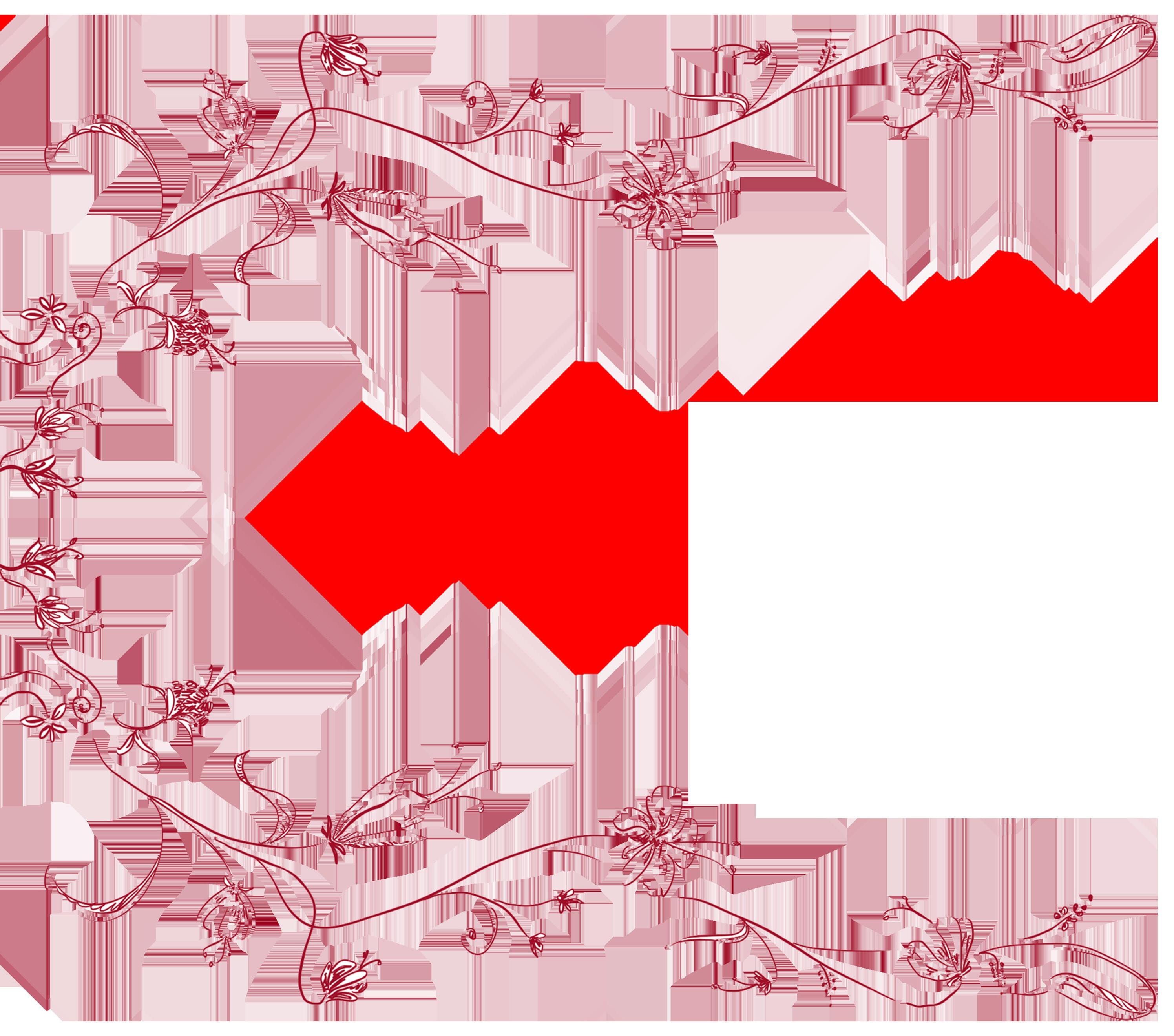
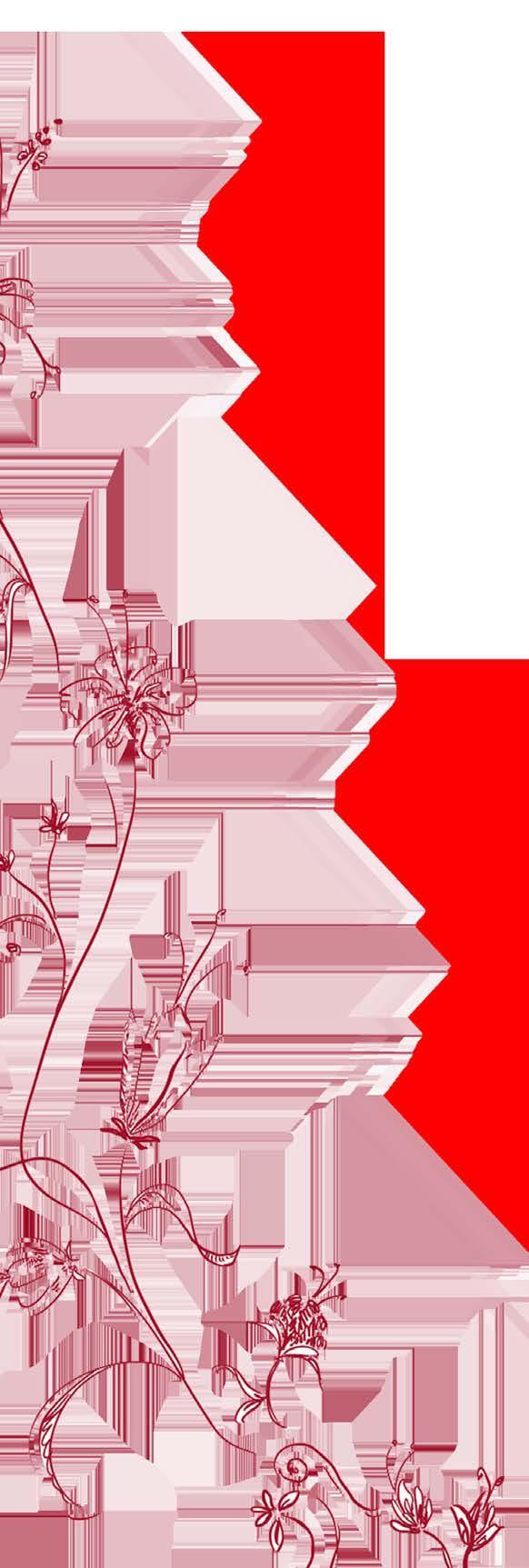
went uncomfortably silent for a little while.
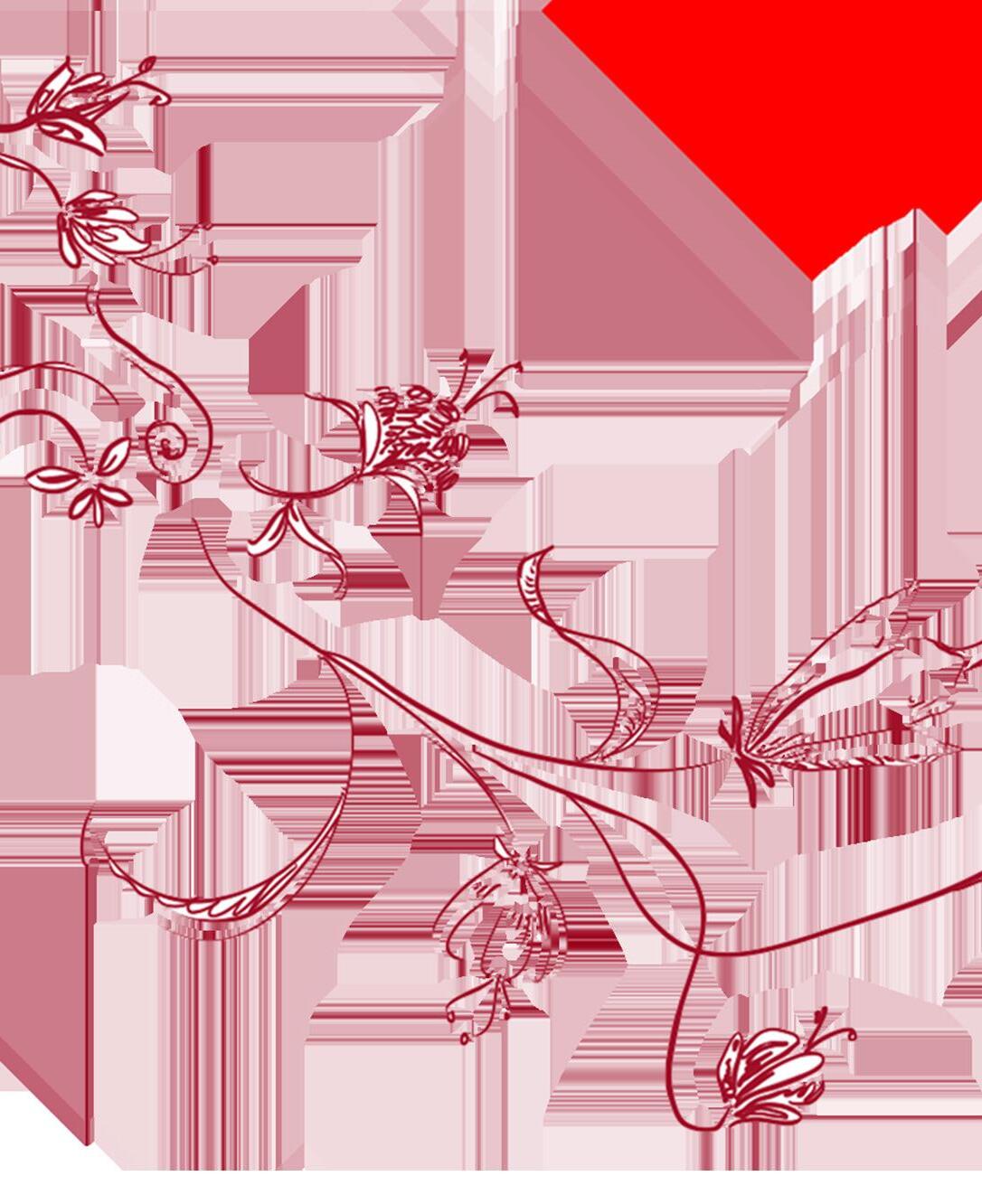
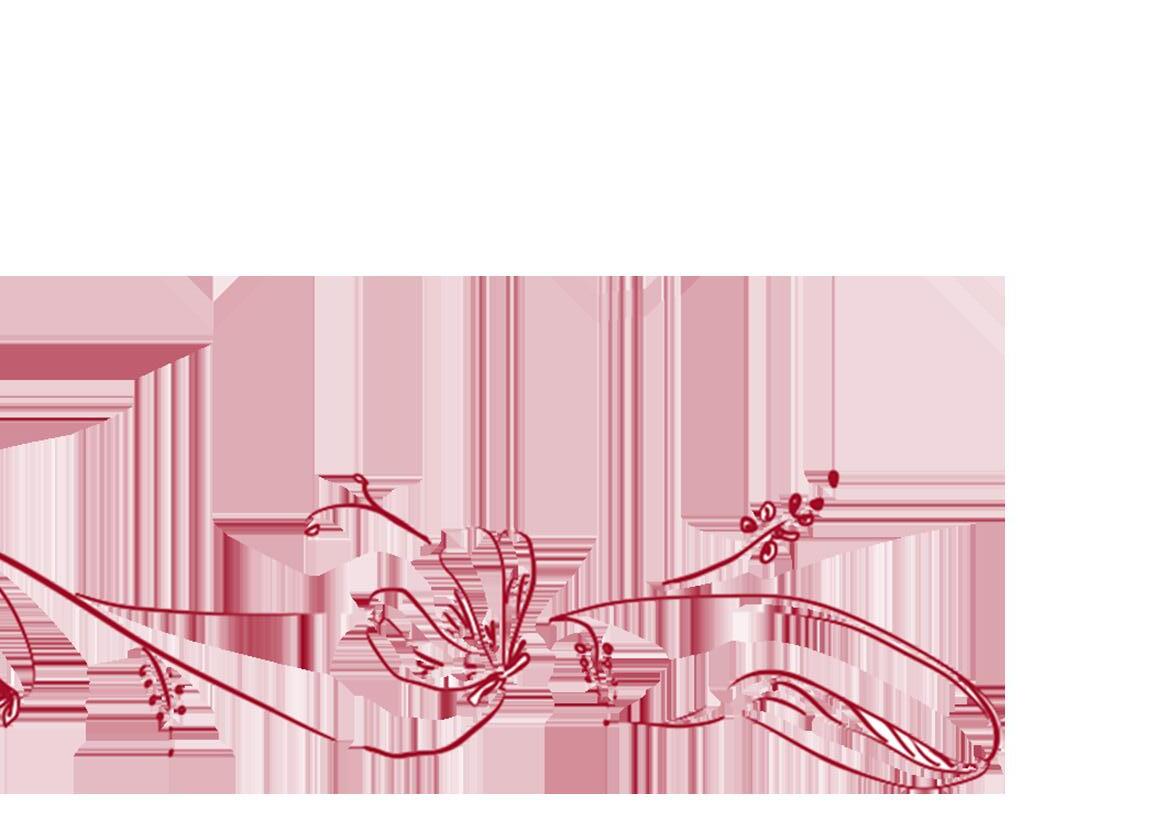
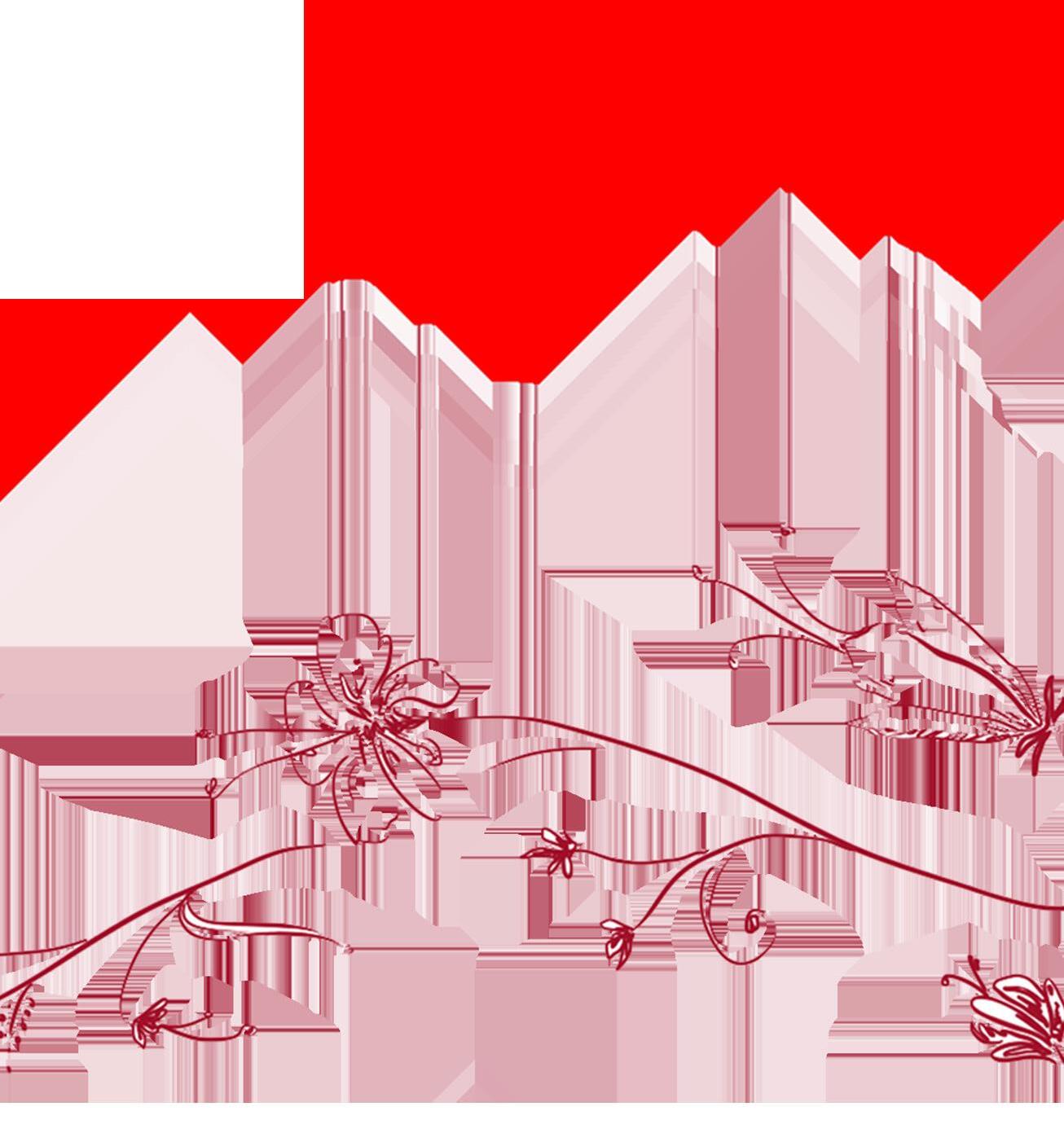
Purny Ahmed pulls out the roots again.
Content Warning: Discussion of domestic violence


keep leaving the house you were raised in, over, and over, until you are truly out. Become the safe place you needed for yourself to crawl into. It is your birthright to heal, to sacrifice everything you know in order to make room to grow into who you deserve to be.

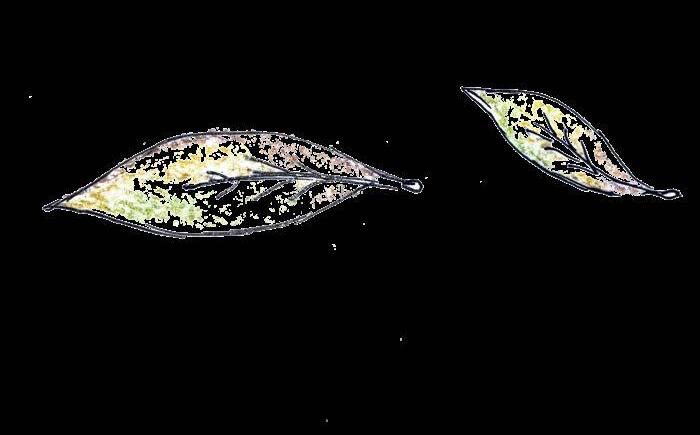

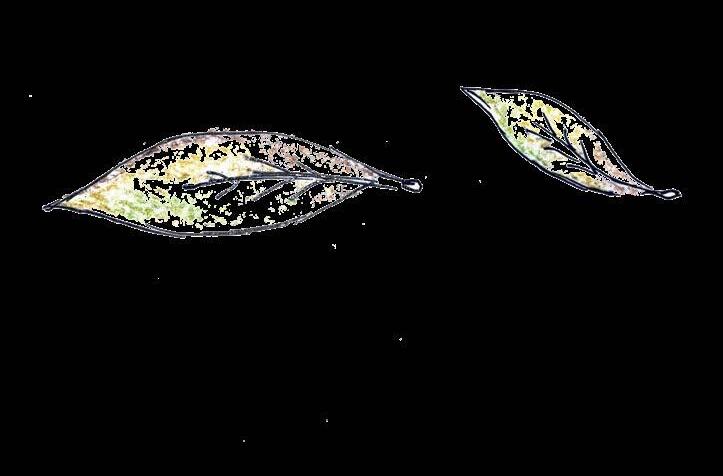
When Arts students think of formal logic, they think of plenty of things like pretentious finance bros and achingly advanced mathematics. A long time ago, I used to be one of these people. But that couldn’t be further from the truth now, as I find myself having completed almost all of the Logic units offered by the Philosophy department. What made me change my mind? In this article, I’m going to try and explain why and along the way, pitch the benefits of studying the illuminating yet often neglected Logic units to you, my fellow Arts’ students.
Every bright eyed English major that dips their toes into the world of logic starts their journey with PHIL1012: Introductory Logic. They’ll begin their ascent by uncovering the foundational concepts of formal logic, one being the cornerstone to any good philosophical paper: the construction of valid arguments. In other Philosophy units you might learn about what a valid argument is and how to prove one, but in an informal and imprecise manner.
That’s because, in those units, your analysis is bogged down by the linguistic constraints of natural languages like English. Communicating abstract ideas in English seems sensible enough given that it’s USyd’s lingua franca, but when it comes to analysing the structure of philosophical arguments, English is limited in showcasing the depth of the argument. In PHIL1012 however, you dig deeper. You translate arguments in English into purposebuilt languages like propositional logic, whereby validity is shown to be a feature of the argument’s form and construction, rather than the truth of its content.
Soon however, you’ll go mad translating claims in English into logic because you’ll be left wondering what exactly to do with the strings of symbols left on your page. That’s where another one of the many handy tools you picked up in PHIL1012 becomes useful: proof procedures.
Proof procedures like ‘truth trees’ are the meat and potatoes of formal logic. They prove whether an argument has a certain property we are looking for. Do you want to prove that two philosophical statements are equivalent? Or whether an argument is valid? Your trusty ‘truth tree’ can help you do that. At the top of the tree, you copy the statements that you want to test and climb down the procedure’s branches, following the proof system’s rules until you reach the ground, where, if all the rules have been followed correctly, you land safely and have your answer. But not all the time though: in PHIL3610: Logic and Computation, you’ll come to see there are some notable exceptions to the rule. The ‘truth tree’ proof system is incomplete by design, as there are arguments that we know to have certain properties that the proof system cannot show back to us. I’ll come back to that soon.
While following these procedures can feel highly mechanical, those of you more conceptually aligned will appreciate the philosophy behind Logic units, where you dig into the ideas of computation theory and metalogic. In PHIL3610, my fondest and most intellectually engaging memories came from the hours spent in lectures discussing the conceptual frameworks that operated at the heart of the unit’s topics. But some of you might like the kind of mechanical problem solving I described earlier as a therapeutic alternative to the typical hand-in-heavy assignments set by Arts’ courses. Luckily for you, assessments in units like PHIL1012 or PHIL3610 involve short weekly problem sets that have to be completed in class or submitted online.
In PHIL3610, we asked whether there were any reasonably worded tasks that were impossible for any computer program or procedure to work out the answers to. Remember truth trees? The mathematician Alan Turing showed that it was impossible for any algorithm to prove an argument’s validity in the predicate logic language. Proof systems like truth trees fail to show whether or not an intuitively valid argument can be proved as such when translated into predicate logic, because the procedure never terminates with a final ‘yes’ or ‘no’ answer. The steps that Turing takes to arrive at this conclusion are so brilliantly counterintuitive that his landmark paper birthed modern computer science and computation theory as we know it today.
If you enjoyed my geeking out for Logic, I don’t mean to crash the party but USyd management definitely hasn’t shown the same kind of appreciation for the Philosophy department that I have. In 2024, the university opted to remove 25 Philosophy units in 2025, with many being merged into multidisciplinary units or being axed entirely due to cost saving measures. While this change may spell trouble for the Logic units in future years, I believe there is a silver lining hiding among it. Studying formal logic is wonderful and there’s no better time than now to do so.


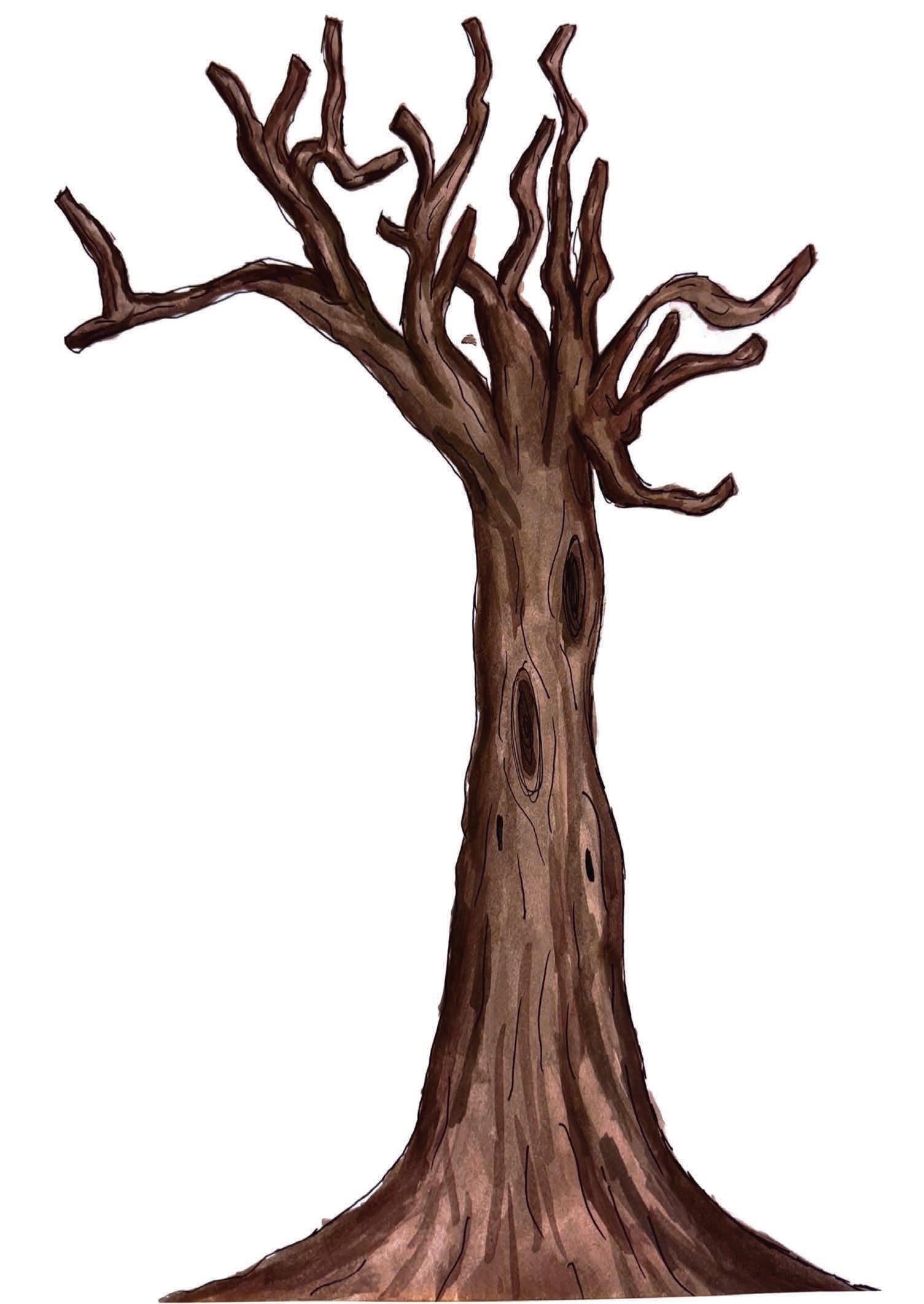
Every Arts Student Yearns for Logic
Sath Balasuriya is logical.





How Jane Austen’s Rumoured Romance Birthed the University of Sydney
Virginia Woolf on Jane Austen: “I prefer to present her, not in the modest pose which her family determined for her, but, rather, as she most frequently presented herself, as rebellious, satirical, and wild. ”
Fact and fiction
It is a truth universally acknowledged…
…that statesman William Charles Wentworth, however contentious his legacy, was one of the “founding fathers” of Sydney University.
A first generation Australian-born “currency lad,” he was a longstanding advocate for the rights of “squatters”: settlers illegally occupying ‘Crown Land’. Unsurprisingly — as a colonist on stolen Dharug land — he was a racist.
But multiple truths can be held at once; Wentworth was, for his time, a visionary.
He fought for representative government in the colony of New South Wales, “no taxation without representation, the right to trial by jury, press freedom and a more egalitarian society (at least for white male colonisers).
And he was a lifelong advocate for universal, secular education. Wentworth was adamant that university admission be dictated not by one’s social standing but on the basis of merit.
On the University’s secular mandate, being one of the first public, nondenominational universities in the British Empire, he said: “the clergy ought to be excluded altogether from… [its] management… its gates must be open to all whether they were disciples of Moses, of Jesus, of Brahmin, of Mohammed, of Vishnu or of Buddha.”
It is after this figure that the Wentworth Building on campus was named, home to PULP, Honi Soit, the Students' Representative Council (SRC) and, most importantly, Uni Bros Kebabs.
The faithful Honi reader and frequenter of stupol circles may know the name in all its infamy, through the “Wentworth Must Fall” movement of 2017-2019, where students campaigned to knock down his statue from its plinth in the Great Hall.
The campaign had an attempted revival earlier this year.
But what, dear reader, does all of this have to do with renowned lady novelist of the late 18th century, Jane Austen?
Historian Wal Walker has suggested that Jane Austen — rebellious, satirical, wild — had a fling with William Charles Wentworth's father, D’arcy (yes D’Arcy!) Wentworth.
A Wentworth descendent, Walker’s venture in uncovering this history started with a rumour. Drawing room gossip that was tittered, whispered, hushed and passed on within the Wentworth family over successive generations.
From the outset, he was working with archival absence and deliberate omission.
History has long been the province of men — so-called “great men” such as William Charles Wentworth. What of a woman novelist, whose works are so prolific but of whose inner world we know so little?
Where “great men” consciously left official correspondence, diaries, memoirs, Austen left hardly a paper trail for the historian to follow.
Her own family persistently disavowed any rumoured romantic tryst. After Austen’s death, her sister burned thousands of letters, something that Virginia Woolf, writing over a century later, bemoaned. Only 160 have survived.
We can only guess at Cassandra’s motive. Was it jealousy at Jane’s ability, as an unmarried woman, to fashion an attic into a writer’s “room of one’s own,” where manuscripts hidden under floorboards were the source of her great fortune?
A fortune that meant she had no need to be tethered to a man, that meant her life’s purpose was not ‘tying the knot’ herself but spinning narrative threads, tying up loose ends in marriage plots?
Or was this an act of desecration to the end of preserving an image — a fiction — of chastity, propriety and respectable spinsterhood? Walker insinuates that the letters were burned out of shame. What were they hiding? What scandal was Cassandra covering up?
The Real Mr Darcy
D’Arcy Wentworth, when Jane Austen knew him, was a rakish ruffian from the north of Ireland, described by his contemporaries as a Byronic character: tall, dark and handsome, and “invariably popular with all classes and both sexes”. Sound familiar?
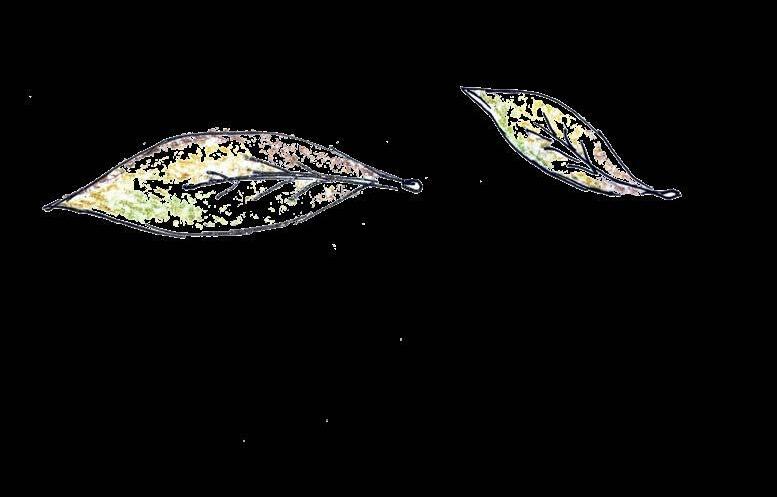
Ella McGrath writes.
But D’Arcy was no Mr Darcy.
The real D’Arcy was far from being a part of the wealthy landed gentry. In his youth, he joined the Irish Volunteers, a radical militia that formed during the American Revolutionary war, in the belief that England would not defend Ireland in the event of French invasion.
D’Arcy was a prodigious gambler. He was known to pursue players who defaulted on their debts and, having taken matters into his own hands, was frequently found himself accused of highway robbery. D’Arcy was arraigned before the courts four times on this charge. He was never convicted, but nevertheless fled to the colony of NSW, through various backdoors dealings with its first governor, Arthur Phillip.
There, he served as a surgeon and was later put in charge of the colonial police force, under the fifth Governor Lachlan Macquarie. A prominent figure in the colonies, he championed the rights of emancipists (convicts without life sentences), and promoted a slew of egalitarian causes. When he died, his son took up the mantle.
If Jane did have a romantic connection with D’Arcy, it’s no wonder that the Austens did not want their family’s reputation to be sullied by the Wentworth name, and a man so truculently opposed to the interests of the ruling class.
Perhaps the only scrap of evidence Walker found for this romance — the basis of two dense volumes of history, detailing the parallel lives of Austen and Wentworth in Jane and D’Arcy — is extant in the marriage records of a small country parish.
The names recorded matched the aliases in the Austen family registry, penned in Jane’s hand: Jack and Jane Smith. D’Arcy often used the name ‘John Smith’.
A teenage elopement with D’Arcy may well have occurred.
In this respect, D’Arcy is less like Darcy and more like the womanising Wickham, who, in Pride and Prejudice, runs away to Scotland with the younger Bennet sister, Lydia.
We know nothing of the breakup.



Ink and Sovereignty: Erasure and Resistance in NSW Women’s Prison
Dr. Miniature Malekpour etches in sovereignty.
‘Our skin holds memory.’
Inside the cramped, claustrophobic confines of a two-out cell in the Theresa Wing of Silverwater Women’s Correctional Centre in NSW, wet clothes hang from makeshift lines, dripping with the sweat, stains, and stories of confinement. Names and Master Index Numbers (MIN) are scrawled across cold metal railings, drawing a sharp line between ‘the crims’ and ‘the screws’. And on the same day these women are locked in their cells, correctional officers fire up BBQs in the yard to celebrate ‘Invasion Day’.
Yet amid this carceral bleakness, something fragile and fierce persists. A woman tattoos her child’s name into her thigh using nothing but a paper-clip spring, black Bic ink, and a makeshift wick made of toilet paper and shampoo gel (jammed into powerpoints).
This self-inflicted pain is no gimmick. It is not out of desperation. It comes from memory, from love. It is defiance. It’s yearning made-flesh, a form of resistance carved into the skin.
But what happens when yearning shifts into a deeper, unquenchable longing for kinship, country, land, sovereignty, when means of cultural appreciation are denied behind bars?
According to the Australian Bureau of Statistics (ABS), as of March 2025, Aboriginal and Torres Strait Islander adults make up 32.4 per cent of the NSW prison population, despite comprising less than 3 per cent of the state’s total population. Indigenous women are even more brutally overrepresented. Driven by systemic poverty, entrenched racism, intergenerational trauma, and punitive bail laws, these numbers reflect a legal system that criminalises trauma and punishes survival. These are not mere statistics. For many Aboriginal and Torres Strait Islander women, prison is not a consequence of wrongdoing — it is the frontline of ongoing colonisation. Here, yearning becomes political. And yet, within this apparatus of erasure, women create. They tattoo. They sing. They paint. They remember. These acts of cultural continuity, performed under siege, are not simple coping mechanisms. They are insurrections.
They are sovereignty.
International law recognises what the NSW prison system denies. Article 15 of the International Covenant on Economic, Social and Cultural Rights (ICESCR) affirms “the right of everyone to take part in cultural life. Article 27 of the International Covenant on Civil and Political Rights (ICCPR) guarantees minorities the right to practice and enjoy their own culture. The United Nations Declaration on the Rights of Indigenous Peoples (UNDRIP), particularly Articles 11 and 12, affirms Indigenous peoples’ right to maintain, protect, and develop their cultural traditions, including archaeological and historical sites, ceremonies, designs, technologies, and visual and performing arts.
NSW prisons ignore these obligations. Tattooing is banned altogether but hairdressing is allowed with strict hygiene procedures. Section 8.2 of Corrective Services NSW’s Custodial Operations Policy and Procedures (COPP) requires stringent hygiene protocols, sterilised tools, trained inmate barbers, and infection control procedures to protect against bloodborne viruses for the practice of prison hairdressing. Now imagine if tattooing were treated like hairdressing: regulated, respected, and recognised. Instead, NSW chooses punishment over protection, erasure over care, as women risk infection and punishment to practice culture.
This is not about safety. It’s
about control.
Even more revealing: Aboriginal inmates may receive traditional foods like kangaroo and bush tucker during cultural events, so long as they are sourced from licensed outlets. This policy acknowledges the role of food in cultural identity. But this recognition doesn’t extend to other expressions like scarification or traditional tattooing, practices with profound ceremonial and spiritual significance in Aboriginal culture.
Scarification and body marking have long been central to First Nations ceremonial life. The Australian Museum in Sydney documents how incisions were made with stone blades, then cauterised with fire, each scar a story. Across

Arnhem Land and the Torres Strait, ancient rock motifs were mirrored on skin. These were not just aesthetic. They marked identity, grief, kinship, initiation etched permanence onto a body shaped by community and Country.
Cross the border to Victoria, and cultural rights are protected in law. Section 19 of the Charter of Human Rights and Responsibilities Act 2006 (VIC) enshrines the right to cultural expression. If Victoria can legislate this, what excuse does NSW have?
When cultural expression is criminalised, creativity becomes resistance and the state doubles down. This is not policy failure. This is policy intent. Skin becomes surveillance. Strip searches become rituals of desecration. Blue uniforms flatten personhood into numbers. But memory lives in flesh, and the state cannot erase it.
Incarcerated women know their bodies are not the state’s property, they belong to Country. A tattoo is not vanity. A scar is not defiance. These are cultural declarations, sacred manifestos carved into flesh. Article 12 of UNDRIP affirms the right to manifest spiritual traditions. So, what is a dreaming track tattooed onto a wrist, if not sacred remembrance?
These marks are not idle. They are maps: maps for women torn from children, communities, land, and self.
In a system that disappears Aboriginal women, yearning becomes rebellion. If sovereignty is written on skin, then dismantling colonial carceral control begins with respecting that inscription. NSW must decriminalise cultural acts like tattooing and affirm the rights Indigenous women have always claimed.
The prison system cannot erase what is already inscribed.
Nor can it silence the songs that echo in cells.
To yearn is to
remember.





“A Caged Bird Can Still Sing” The BK-16’s Song of Resistance
Remy Lebreton and Victor Zhang yearn for democracy.
“A caged bird can still sing”, Father Stan Swamy writes in a letter from prison, while politically incarcerated by India’s ruling party, the Bharatiya Janata Party (BJP). Swamy is just one of many political prisoners arrested without trial in the case of the Bhima Koregaon 16 (BK-16). His writing speaks to their inspiring commitment to continue their struggle for freedom and democratic rights, even from behind bars. Their very continued existence, however stifled, is resistance, and a threat to the legitimacy of Narendra Modi’s authoritarian regime under the BJP.
The esteemed anthropologist Alpa Shah vividly recounts the stories of the BK-16 in her 2024 book The Incarcerations: BK16 and the Search for Democracy in India. The Bhima Koregaon 16 were democratic and human rights defenders — journalists, poets, lawyers, academics from different walks of life and from all across India — accused of being Maoist “urban Naxalite” terrorists who sought to dismantle the Indian state and assassinate Prime Minister Modi. The Naxalites refer to communist insurgents across India inspired by Mao Zedong’s protracted people’s war.
There is no credible evidence the BK-16 have any involvement with the Communist Party of India or any Naxalites, yet they have all been imprisoned without trial. The only common ground they share is their advocacy for a democratic India, desire for the emancipation of India’s oppressed Dalits, Adivasis, and Muslims, and disdain for the authoritarian Hindu nationalist BJP — a fact conveniently ignored by the BJP.
Alpa Shah visited the University of Sydney in May 2025 to deliver a guest lecture on her book, where she also shared insights on how fascism can rise through democratic institutions and how it can and should be resisted.
For those who are unfamiliar with Alpa Shah and her work, she is one of the most inspiring and radical social anthropologists alive today. Some of her other notable works include India’s Revolutionary Guerrillas an ethnography of Naxalite Maoists, and Participant observation, a potentially revolutionary praxis on the radical possibilities of ethnographic research. Shah has inspired countless aspiring anthropologists, including those writing this article.
Her work continues to be a shining example of anthropology at its brightest and most aspirational. It is a field of anthropology that questions our everyday assumptions and presuppositions, one that seeks to platform and empower the marginalised and oppressed, and perhaps most importantly, one that seeks to know the world so that we might change it for the better.
The story of the BK-16 starts with the 2018 Bhima Koregaon-Elgar Parishad case, when Dalits, an “untouchable” oppressed ethno-cultural caste gathered to commemorate the Battle of Koregaon Bhima, a date of great significance to them. At the gathering, a mob of Hindutva (Hindu supremacists) began to attack the crowd, pelting them with stones, and a number of people were killed.
The BK-16 were subsequently blamed, and were said to have intentionally incited the violence as part of a Naxalite plot to assassinate Modi. The BK-16 each had ‘evidence’ implicating them in Maoist activities and the fabricated assassination plot planted on their devices. An independent analysis of the data would show “a link between the police who made the arrests and those who hacked the computers”.
The hackers, backed by the state, would even target the BK-16 and their supporters with the notorious Pegasus spyware, a product of the Israeli NSO Group acquired by India after Modi’s state visit to Israel in 2017. “Someone wanted the BK-16 in jail, and to keep them there”, Shah writes.
Despite the sophistication of technology and wealth of resources afforded to the hackers, their work was sloppy and failed to cover their tracks. Perhaps, they simply did not bother to, as claims that the evidence was implanted would be rejected or dismissed by the judiciary.
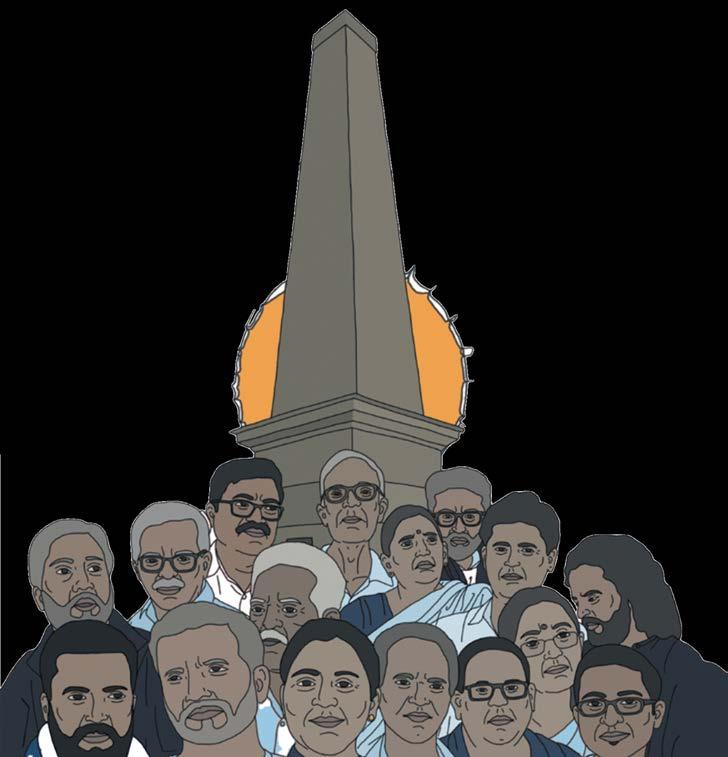
relentlessly work for justice without monetary reward or recognition or status.”
Sudha Bharadwaj, a trade unionist, lawyer, and academic, chose to forgo a comfortable and privileged life to fight for the industrial rights of the informally and precariously employed. She would later train to become a lawyer and advocate for the rights of the Adivasis (the tribal peoples of the Indian subcontinent) in Chhattisgarh, as state and private corporations sought to dispossess them to exploit the mineral rich land on which they lived. Even while incarcerated as one of the BK-16, she worked tirelessly to educate her fellow inmates of their rights and help them write bail applications.
Gautam Navlakha is a journalist for the Economic and Political Weekly and democratic rights activist. His commitment to exposing the atrocities against Muslims in Kashmir and the rapid militarisation of the region was seen as a threat to the state. Shah notes that, where the first round of arrests acted as warning to silence those who would advocate for the rights of Adivasis and Dalits, Gautam Navlakha’s arrest in the second round was a warning to those who advocate for the rights of Muslims and Kashmiris in particular.
Father Stan Swamy, a Jesuit priest and lifelong activist for Adivasi rights, was one of the last to be arrested in 2020. Swamy was born into an upper caste landowning family, but later renounced that life to embark on a lifelong struggle for the rights and welfare of the Adivasi. When he died in incarceration in 2021, he was buried as an Adivasi martyr.
Shah warns of Western complicity and willingness to tolerate the masquerade of democracy amidst India’s descent into authoritarianism, citing Australia’s close commercial relationship with India where “fossil fuels and the extraction of coal has a very direct relationship to my story [the BK-16]”. Indeed, Adani, closely linked to the BJP, has operated coal mining operations in Australia for over a decade, greenlit by the Australian Government.
To conclude her talk, Shah outlined the authoritarian playbook as the means and method that allowed the dismantling of democratic institutions and the incarceration of sixteen activists. She then outlined the politics of planetary care as the means and methods of resisting authoritarianism and a vision for a better world exemplified by the BK-16.
The Incarcerations is a beautifully and expertly written account of how authoritarianism can rise through the rituals of democracy told through the stories of the BK-16. It is a potent reminder of what is at stake for us as anthropologists, journalists, and activists. It is also a message of hope. Even while incarcerated, the BK-16 continue to fight for the oppressed even while incarcerated — their existence is resistance.
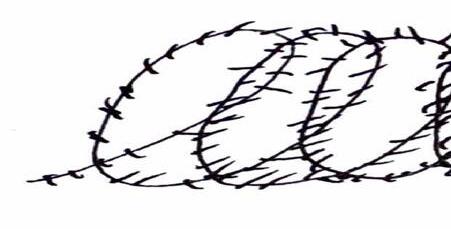
1st January 2018
Right wing groups attack an anti-caste celebration at Bhima Koregaon
June 2018
Arrests of Surendra Gadling, Sudhir Dhawale, Rona Wilson, Shoma Sen, Mahesh Raut
August 2018
Arrests of Vernon Gonsalves, Arun Ferreira, Gautaum Navlakha, Sudha Bharadwaj, Varavara Rao
April-October 2020
Arrests of Anand Teltumbde, Hany Babu, Ramesh Gaichor, Sagar Gorkhe, Jyoti Jagtap, Father Stan Swamy
The Politics of Planetary Care
Fighting soaring economic inequalities, ecological, and social injustices created by corporate capital-state nexus
Fighting for labour rights and against dispossession for extraction, for indigenous land and forest rights, environment justice, and human rights
Centreing an analysis of racial / caste capitalism
Creating cross-identity, crossclass alliances
Uniting and creating alliances between different types of grassroots movements for justice
Legal struggle to go hand-inhand with the street fight
Intellectual and activist at the same time
Versatility of contributions as activist scholars
Deeply embedded in social movements and could reach from the grassroots to the national
The Price of Palatability
Even before we develop our own sense of identity, women are told to be afraid of aging. From tabloid magazines that incessantly highlight the wrinkles or aggressively demeaning headlines about the weight gain of celebrities, to the TikTok phenomena of the ‘antiageing straw’ in which you avoid the development of smile lines by not sucking into the top of a straw, but rather slightly biting it from the side, to Kim Kardashian’s new ‘face lift’ cloth.
A clock is placed in the back of our minds, whose rhythmic ticking reminds us incessantly that we cannot be beautiful unless we are unmarked by time. And as beauty is often patriarchally regarded as the most highly valuable thing a woman can possess, the pressure to maintain an eternally youthful appearance becomes a means of controlling our worth, reducing femininity to a commodity defined solely by physical appeal.
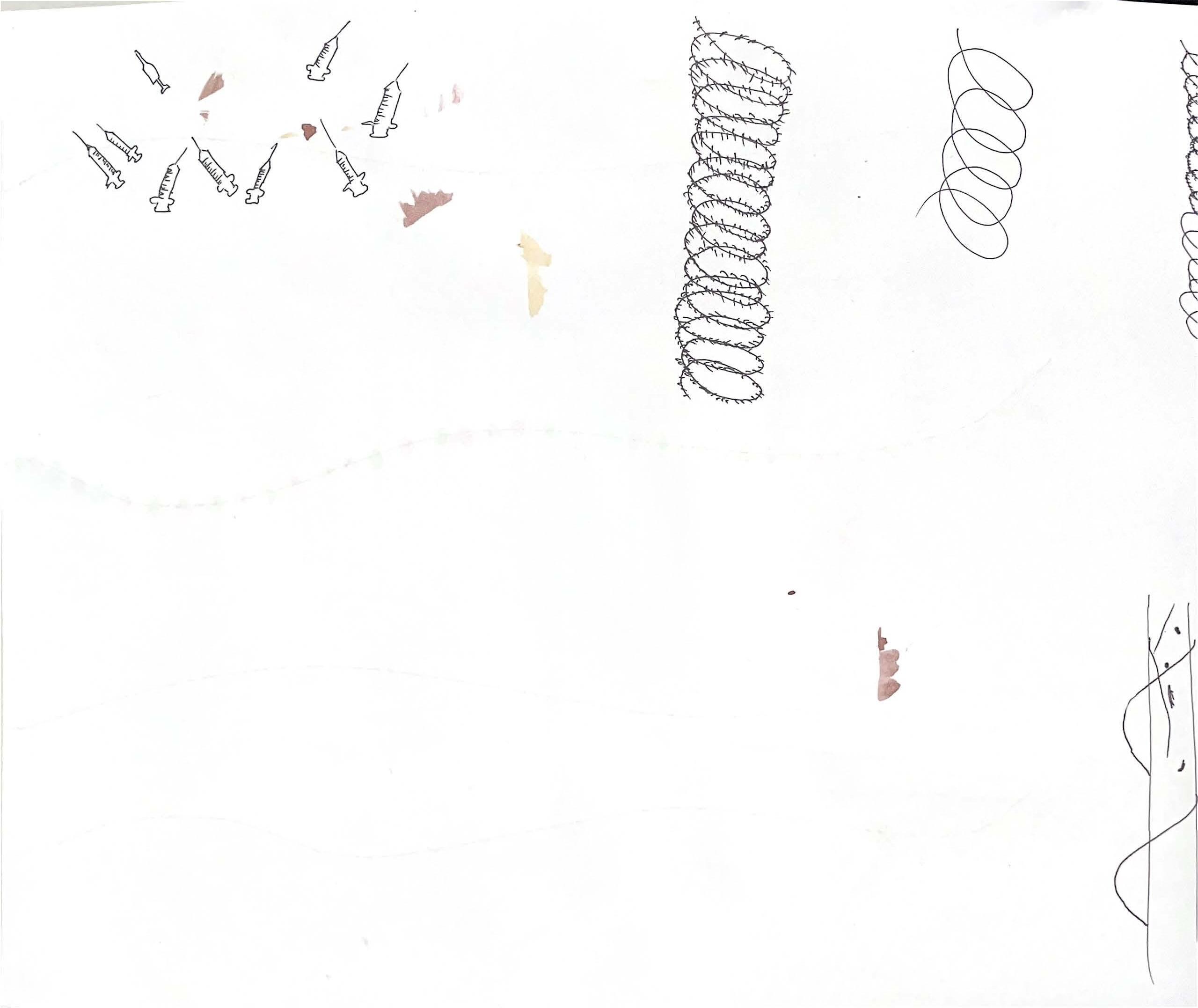
chemical that carries messages between nerve cells of a muscle). Without acetylcholine, muscles are unable to contract, leading to targeted paralysis in specific areas. This effect is what relaxes wrinkles and prevents spasms. Essentially, botulinum toxin reduces wrinkles by temporarily paralysing the muscles responsible for them. However, because the effects are temporary, the toxin gradually dissolves over time, meaning multiple injections, every three to four months, are required to keep up paralysis.
Even before we develop our own sense of identity, women are told to be afraid of aging.
What is the price of social and aesthetic palatability?
cosmetic procedure over the current decade. Significantly, 85.1 per cent of cosmetic Botox patients were women. This vast gender divide accurately represents the societal pressures of the patriarchy that equate feminine youthfulness with desirability and social value. It is important to note, of course, that Botox is not only used as a purely cosmetic treatment. When injected into the forehead, temples, or back of the neck, Botox can mitigate the frequency and intensity of migraines, and can reduce unwanted and uncomfortable muscle convulsions. This piece is anything but a denial of that. Nor is it a judgment of women who have Botox, but rather, it aims to be a critical discussion if Botox can be seen as a tool embedded within overtly patriarchal Western society to silence women by effectively dimming their emotional range.
argues that these expressions play a crucial role in helping us understand, feel, and regulate our emotions.
Within the paralysing and dehumanising logic of cosmetics, the emotions which make us human become subordinated, placed below the need for aesthetic palatability.
But who cares?
If you typed “do facial expressions…” into Google, the search engine would helpfully complete your incipient sentence with “cause wrinkles?” And if you, with your curious mind, clicked on that link, the AI overview would confirm that yes, expressing your emotions can cause wrinkles, warning readers about “repeated facial movements, like smiling, frowning, or squinting”, which may place dreaded lines on our faces. This creates a contradiction in which women are expected, and even encouraged, to limit their own range of expression and erase the language of their faces to please ever-shifting beauty standards. Luckily, the billion dollar beauty industry has offered a cure. A solution that physically paralyses emotional expression to ensure infinitely smooth skin and unequivocally tight foreheads. Botox.
What is Botox?
Botox is produced from a toxin found within the Clostridium botulinum bacteria. When injected or administered into muscle, the toxin spreads across nerve terminals and prevents the release of the neurotransmitter acetylcholine (a
The now-widespread idea of Botox as a purely cosmetic procedure differs extravagantly from its initial, strictly medical use. The employment of botulinum bacteria as a medicinal toxin can be traced back to 1870, when the German Physician Justinus Kerner hypothesised its ability to have a possible therapeutic use, naming it “sausage poison”, (from the Latin botulus, meaning sausage). However, it wasn’t until 1973 that Botox became officially recognised as a medical solution to treat muscle spasms, when American eye doctor Alan B. Scott injected the bacteria into patients with strabismus (a condition in which the eyes don’t look in the same direction at the same time due to dysfunctional muscles).

Evidently, the understanding and usage of Botox in today’s contemporary psyche has largely shifted, becoming viewed and employed as a cosmetic procedure aimed at reducing wrinkles and other visible signs of aging. In 2022, over 9 million Botox procedures were performed worldwide, allowing it to become the most popular non-surgical
Facial expressions are, undeniably, “the most important form...of non-verbal communication”, impacting both reception and internal understandings of emotions, as well as how individuals personally experience them. For example, a study conducted by the University of South Australia found that the physical act of smiling has the ability to trick your brain into thinking more positively, albeit only slightly. When participants held a pen between their teeth, and their facial muscles were forced to replicate that of a smile, Dr MarmolejoRamos found that “forcefully… smiling…stimulates the amygdala — the emotional centre of the brain — which releases neurotransmitters to encourage an emotionally positive state.” This link between expressive action and internal emotional perception is the foundation of the facial feedback hypothesis, which

As such, “inhibiting one’s facial expressions can influence one’s emotional experience”, by diminishing the scope and range of emotions felt and our own passive ability to gesturally articulate them. Thus within the paralysing and dehumanising logic of cosmetics, the emotions which make us human become subordinated, placed below the need for aesthetic palatability. A report from the National Institutes of Health concluded that, due to the paralysis of their facial muscles, “Botox participants exhibited an overall significant decrease in the strength of emotional experience.” It is evident then, that the psychological cost of beauty norms that prioritise smoothness over expressiveness reinforces a cycle of emotional repression, where the suppression of true feelings becomes normalised in the pursuit of idealised beauty.






We are supposed to be expressive. We are supposed to feel the crinkle next to our eyes when we laugh, and wrinkle our forehead in faux confusion. We are supposed to be able to break down into bitter, resentful tears, and frown. When you look at your grandmother, or your mother, or the quiet lady that sits next to you at the bus stop, you notice the kindness of her eyes and the velvet softness of her voice so overwhelmingly you forget to notice you’ve been told to fear her wrinkles. My inevitable smile lines will prove my friends kept the invaluable ache of laughter in my stomach; they will tell the story of surprise parties and summer picnics and road trips. My forehead wrinkles will meld to the shape of all the worries I was strong enough to overcome.
Remember to be passionate, not just palatable.
Art by Imogen Sabey
‘Protect Mardi Gras’ or Protect Queer Lives?
Two weeks ago, a group in the style of the right-wing Advance and Better Councils launched a campaign called ‘Protect Mardi Gras’. It argues for the inclusion in the parade of Zionist companies, killer cops, and bigoted politicians — presenting these as the real ‘grassroots’.
‘Protect Mardi Gras’ posits that Mardi Gras is stronger by embracing ‘both sidesism’ and is under threat by taking ‘divisive’ stances on the Palestinian genocide, Blak deaths in custody, and trans and sex worker rights.
‘Protect Mardi Gras’ celebrates these cop outs, compromises, and paid junkets as examples of diversity. Our community and pride parade are allegedly made stronger if we can include pro-genocide voices, but ordinary queers know better — we know that liberation is not won by covering up genocide.
Cops Out: Dismantle Operation Mardi Gras!
‘improving’ if we wrap them in glitter, give them yet another round of diversity training, and let them march.
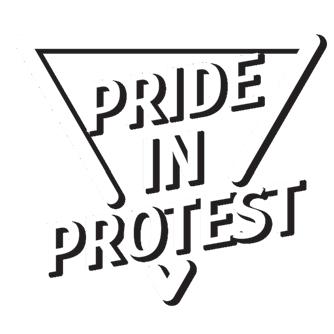
Pride in Protest fights back.
seen low ticket sales and empty venues, and the focus of ‘Protect Mardi Gras’ on apolitical celebrations — when young people are overwhelmingly showing out to political protests and events — reflects the campaign’s disconnect from real queer youth.
Pride in Protest, while far from the only group fighting for Mardi Gras to meaningfully support the most marginalised in the queer community, is specifically targeted by ‘Protect Mardi Gras’ as “pushing an exclusionary agenda”. We wholeheartedly reject this characterisation. ‘Inclusivity’ means nothing if it fails to challenge pinkwashing and excludes queer Palestinians fighting for self-determination; if it denies the history of colonisation and ongoing brutalisation of Indigenous people in socalled ‘Australia’; if it throws transgender people and sex workers under the bus to appease politicians who refuse to pass legislation to protect our lives.
Police have a long history of persecution of minorities before, during, and after the first Mardi Gras in 1978. Police assaulted and even tortured some of the original Pride marchers. Since that time, cops have continued bashing queers, increasingly with the approval of so-called community leaders.
We have inquiries telling us police ignore homophobic attacks. We’ve had cases of workplace immigration raids causing broken arms.
Mardi Gras also currently runs a user-pays policing program called ‘Operation Mardi Gras,’ where the community literally pays the government to police its parade. This program cost $1.96 million for WorldPride. Given the financial challenges raised at the last Annual General Meeting (AGM), these ‘services’ are themselves a financial threat to Mardi Gras.
These services include sniffer dog and strip search practices since found illegal by the courts, and police who have been found to have harassed and intimidated attendees. These services also include the on-duty officers paid to march in the float with guns. We pay the police to illegally harass us and pinkwash themselves.
Sexist, Racist, Anti-queer, Politicians are Not Welcome Here! Party affiliation and power is the core of what actually motivates ‘Protect Mardi Gras’. The past several years have seen front groups set up to vilify the left and uplift a more corporatised Labor Party.
This current iteration is a thinly veiled front to campaign for the convenor of NSW Rainbow Labor and board member of the Gay and Lesbian Business Association, Savannah Peakes. Peakes has strongly hinted at a tilt for the Mardi Gras board and has announced her interest in a platform of “more queers on boards.”
Queers for Gaza! Globalise the Intifada!
We have just seen hundreds of thousands take the Harbour Bridge to declare their opposition to genocide, in defiance of the Minns Labor Government and the NSW Police. It was one of the biggest protests in Sydney’s history.
These protesters marched because of the urgent crisis in Gaza where a majority of the surviving population face the final stages of starvation. ‘Israel’ abuses and starves more Palestinians every moment that the Labor government delays action, and it is overwhelmingly clear that there are not ‘two sides’ to these atrocities.
Many trade unions and civil society organisations endorsed the bridge march, but major LGBTQIA+ organisations were conspicuously absent. Mardi Gras claims to support a ceasefire, but, according to information leaked to Pride in Protest, its directors took paid tours to ‘Tel Aviv’ while ‘Israel’ bombed Iran. Mardi Gras was similarly silent in April when ‘Israel’ murdered over a hundred transgender prisoners in Iran, potentially the largest single mass killing of trans people in recent history.
Less than a month ago, NSW Police murdered Collin Burling, a gay man, in front of his partner during a welfare check. On 27th May Northern Territory Police killed Kumanjayi White, a Walpiri man, in a Coles supermarket. Guarav Kundi, an Indian immigrant and father, died after South Australia Police violently restrained him on 13th June.
In 2009, Veronica Baxter, a Blak trans woman, was killed while under ‘care’ of NSW Police, and her death was unremarked on by organisations like Mardi Gras.
When Mardi Gras is asked to step in on the issue of police murdering Blak people, the ‘Protect Mardi Gras’ crowd sometimes nauseatingly cries ‘it’s not our problem’. Even accepting this revolting premise, we are confronted with the truth that police persecution of queers has not ended. Even in non-lethal encounters, police officers consistently delight in humiliating queer people on the basis of their queerness and enact government-sanctioned sexual violence without restraint.
Mardi Gras cannot be a celebration of queer freedoms if we are platforming the institutions which kill us without hesitation or changes afterward. LGBTQIA+ police officers should quit their jobs and march as part of community floats like the rest of us. Those in ‘Protect Mardi Gras’ who oppose the removal of the NSW Police float from the parade deny the inherent and systemic violence of the police, instead believing police forces can be politely corralled into
Community consultations by Mardi Gras in August and September of 2024 — open to queers and allies, including those without paid Mardi Gras memberships — found widespread opposition to police floats. Mardi Gras members also voted at the 2023 AGM to cancel the Police Accord. Still, the NSW Police float remains. An agreement with the police to march out of uniform was also met with bad faith as NSW Police engaged an armed escort to ‘protect the float.’
This came to a head at the last Mardi Gras AGM with a razor-thin margin on whether to allow cops to march in the parade. The debate even saw Chris Minns campaign to Mardi Gras members through corporate media and mass sign ups by Labor members to impede the decision.
The AGM also requires members to pay a yearly fee of $50 ($40 concession) for voting rights. While ‘Protect Mardi Gras’ claims Pride in Protest are “using AGM votes to push an exclusionary agenda”, it’s clear we represent a grassroots portion of the community not on Labor’s payroll and facing systematic barriers that both put them at higher risk of police brutality and exclude them from voting at the AGM.
Further, while ‘Protect Mardi Gras’ claims to be about reaching young people, this falls short for similar reasons. ‘Protect Mardi Gras’ is scrambling to ‘protect’ the organisation in part to save face from Mardi Gras’ massive financial losses as reported at the last AGM. However, queer youth face the brunt of the cost-of-living crisis and can’t afford beach party tickets. Mardi Gras’ major events have recently








Rainbow Labor has taken a stronger interest in the board largely because of the implied threat presented to Chris Minns and Anthony Albanese. The Mardi Gras 2024 AGM voted overwhelmingly that state politicians had to back the Equality Bill if they wished to be welcomed to march in Mardi Gras. Similar motions have been presented to demand Albanese support removing religious exceptions to anti-discrimination law, something even the Australian Law Reform Commission supports.
These are the concerns that are truly being fought against: not their claims that we want ‘division’ or ‘to gatekeep queer purity’, but that a commitment to trans rights may actually be required from our government. ‘Protect Mardi Gras’ campaigns to protect the reputation of the Labor Party and to prevent reform.
The struggle for queer liberation must continue, and Pride in Protest will keep fighting regardless of whether Minns and Albanese support our rights.
Trans Day of Resistance is in November. If you are serious about getting active in the queer community, get involved in building the protest. We will also be taking this fight up at the next Mardi Gras AGM, where we will be fighting to win. We hope you join us.

The Sound of the Woman Who Loves You

Ananya Thirumalai cast a spell on you.
There’s a hunger in the half-light, a soft ache in a song that isn’t quite over: that’s the story of Stevie Nicks and Lindsey Buckingham, still entwined in myth, melody, and an on-again, off-again romance more than half a century later. Their long-lost 1973 debut Buckingham Nicks — their original duet before the Fleetwood Mac storm — returns in full remastered glory on 19th September, finally streaming and pressed to vinyl after decades in obscurity.
It began with a whisper: cryptic posts quoting lyrics from “Frozen Love.” Nicks wrote, “And if you go forward…”; Buckingham replied, “I’ll meet you there.” That moment reopened a door fans thought long-sealed. Days later, a Sunset Boulevard billboard crowned the announcement, a visual exhale of past intimacy reborn into the present.
Buckingham Nicks may initially have fallen flat in 1973, but its cult status grew until it became legend — a treasure for collectors, a musical ghost haunting vinyl bins. Mick Fleetwood allegedly stumbled on “Frozen Love,” and invited the pair into Fleetwood Mac, fueling an emotional alchemy that would reshape rock. This reissue, remastered from original analog tapes with audio directed by Chris Bellman, packages that genesis in high-fidelity, with limited editions, colored vinyl variants, and bonus singles for superfans.
But this is what yearning writes: penning your unfinished sentences in loops of harmony and heartbreak. Stevie turned heartbreak into Silver Springs, Lindsey turned longing into Go Your Own Way. Their studio debut was less a record than a promise delivered in fragments, waiting for its full debut.
In 2025, it emerges as a monument. A pair long estranged after Buckingham’s dismissal from Fleetwood Mac in 2018 — followed by legal battles, medical crises, and mourning over Christine McVie’s death — stand again at the intersection of legacy and release. No reunion tour has followed. Nicks has reaffirmed that without Christine McVie, gone since 2022, the band cannot be reborn.
Still, Buckingham Nicks returns as testament to the impossible threads that keep pulling two artists toward each other. Their voices overlapping again (even if decades apart), sealed in a vinyl gatefold package, is the ache made audible.
This is an album made before their great fame, in the raw incandescence of young love and ambition. It was awkward and earnest. Now, it’s everything we long to say.
That’s what makes it feel so eternal. They never give us the resolution we crave. Instead, they offer tension, eye contact,
and harmonies that hurt to hear. Their situationship is never just romantic — it is ritual. A feedback loop of ache and art. They are mythologies performing themselves live.
There’s that famous moment during the 1997 Silver Springs performance where Stevie stares Lindsey down and spits out the lyric, “You’ll never get away from the sound of the woman who loves you.” She doesn’t blink. He doesn’t flinch. We, the audience, do. It’s terrifying and theatrical. But it’s also true. Seen through a love that never got to become safe, that never settled into domesticity, that makes it linger longer.
It’s not healthy, but yearning rarely is.
In our current world of soft launches, side eyes, and playlist-coded confessions, this kind of exposed, intergenerational longing hits different. It’s evidence of how often we say the truest things through art. Of how creativity becomes a holding pattern for feelings we’re too scared to speak aloud. In this economy, who doesn’t romanticise the muse they never got over?
There’s also something inherently occult in the way this longing is expressed. In the way Stevie performs femininity — hyper-glamorous, veiled, ghostly — and yet uses it to haunt. In the way Lindsey matches her in intensity, but never control. It’s a dynamic that feels theatrical, operatic, unspeakably tender. It’s all subtext and costume changes. Longing wrapped in lace. Masculinity undone by eye contact.
And isn’t that what yearning is? A performance of restraint. The desire to want, but never quite touch. The edge of confession, held for just a moment longer. Buckingham Nicks captures that impulse before it calcified into history. This is what their love sounded like before it was ruined.
And now it returns as a document. Proof that some people never stop singing about each other. That some ghosts deserve microphones. That some love stories sound best when they’re unresolved.



Soundtrack of Self
The first person who ever made me a mixtape was my dad. A yellowing 700MB Sony CD-R tucked into the expansive physical media library in my house, dated 26/11/2008 with the simple title: Audrey CD Mix. The sonorous patchwork of Jellyfish, Sweet, Two ex-Beatles, and Teenage Mutant Ninja Turtles was a tangible expression of his love (and the wiles of the coolest toddler). The cornucopic selection that soundtracked my juvenile years was expressed through CDs and a pink MP3 player — bejewelled with faux pearls and pink spinel — and overloaded with 251 songs added between 2009 and 2013, where Soundgarden and Hannah Montana existed as neighbours.
The music is a time capsule of my childhood. Opening windows to where I can still hear my father plucking an octopus-stickered wooden guitar channelling Jeff Buckley and George Harrison while I stared with the unflinching awe-ridden eyes of a raptured toddler; the metronomic counting of my mother learning my Katy Perry dance routine because my five-year-old brain wouldn’t cooperate with my five-year-old limbs. Music has found a way to symphoniously weave itself into every memory and connection in the tapestry of my life.
Music has accompanied every version of myself that has existed, with curated soundtracks from teenage angst to heady heartbreak. I always find myself returning to those antiquated accompaniments to conjure a version of myself that doesn’t tangibly exist anymore, louder here and softer there. To see if I can still taste the streaks of sodium tears that accompanies the keen sting of being fifteen. Or if I can find traces of the people I shared music with, whether in the form of old mixtapes or singular tracks that still carry the echo of
“this reminded me of you.”
There’s a version of myself that balanced on the tightrope between 13 and 14: box-red hair that bled onto every white towel, fingers fumbling on bass guitar, a paperback obnoxiously glued to my hand like a lifeline, and the belief that Robert Plant was my god. I still carry her within me, remembering the way her small male-dominated classic-rock world cracked open with the advent of The Runaways and Viv Albertine’s ‘Clothes, Clothes, Clothes. Music, Music, Music. Boys, Boys, Boys’. Visceral, female, and ferociously alive, the women of rock and punk who now lay across my bedroom walls whispered to 14-year-old Audrey about how they carved space in a world that rarely accepted them.
Audrey Hawkins will burn you a CD.
The plain question, “what music are you into?” has always served as my loyal conversation starter and a shortcut to intimacy. It was one of the first things I asked my partner when we met, the world briefly narrowing down to only us and the fact I knew more Pink Floyd songs than him. It’s a coded way to say, “I want to know who you are. I hope you want to know me, too”, with the silent prayer that maybe, without fanfare, the person you’re existing with in that moment will echo your love. It speaks to a connection reminiscent of a childhood playground. We enjoy the same things so it’s only natural that we’re friends. That ease of unforced connection, a shared identity, has facilitated some of the most vital connections of my life.
And from those connections comes the sensory love letter of mixtapes.
Playlists are a form of emotional cartography, a labour of love that quietly whispers: I paid attention. I see you. I know you. The result traces a map of personage while creating a vessel for time travel. The songs that the dedicatee loves. The tracks that glow with communal memory. The artists that you adore, and wish to share a piece of your heart through. The ballads that remind you of the recipient. And feelings that existed at the time frozen in a sonic memory.
They’re a gift of packed communication, stepping in where words fall short. I still have every playlist that has passed through my hands. Some for friends, some for lovers, and some for people I prefer to never think about again. Regardless, two seconds into ‘Hungry Heart’ will always teleport me to a candlelit dinner at 10pm.
Music, instilled in me by my father, has always been the way I’ve learnt myself and others. I stitched myself through my revolving doors of opposing subcultures: style ripped from 60s mod and tempered by 90s thrift, philosophies scavenged from Riot Grrrl’s nerve and Post Punk’s spine, and film reverence from scores. I found myself, not through subscriptions to one prescribed genre, but through the quiet amalgamation of self-assembly. Likewise, I posture as a long-haired version of my dad; sending spotify links and burning CDs that allow me, for the short lifespan of the tracks, to bottle the life and memories of the people I care for the most.
Now, when I sit in my room and listen to the echoes of disjointed playlists, the traces of teenage angst and the little girl who sang to Spilt Enz with her father still reverberates within me. I hold hands with every version of myself I’ve ever been as they choir the person I’m turning into.
Making this House (Party) a Home
Will Winter is hosting.
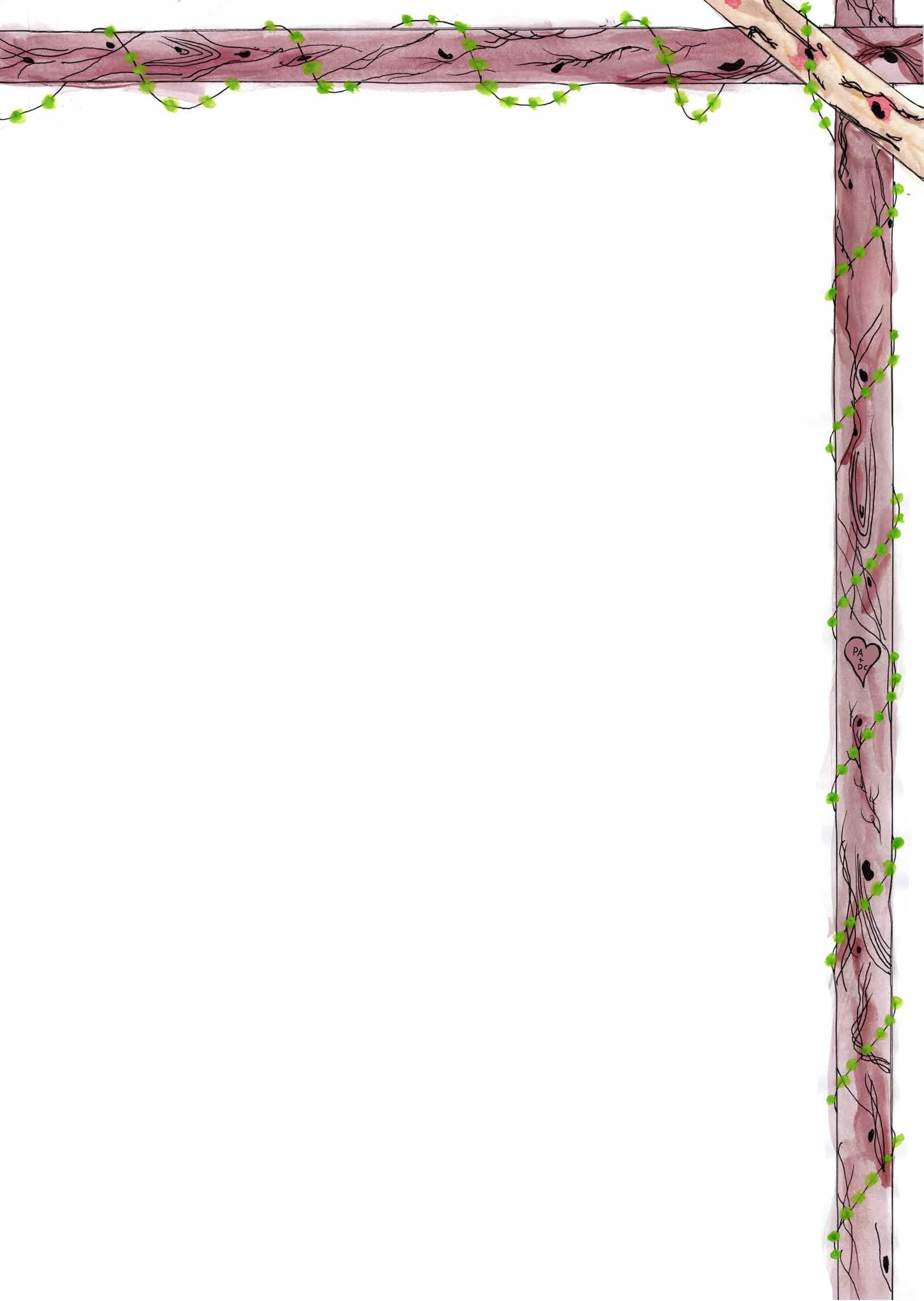
At the first house party I ever went to I had a panic attack in the bathroom. I was seventeen and I had vetted it thoroughly: there’d be no drinking, no drugs, no dickheads who I didn’t know that would turn it into a sleazefest. I didn’t particularly want to go in the first place, but I had one close friend who would be there, and I wanted to experience this thing that feels so didactic, so essential to what it means to be a teenager. Still, I was perturbed.
I arrived to this friend-of-a-friend’s house in the early afternoon and heard someone talking about his brother maybe picking up alcohol for us. At the mere utterance of the word ‘alcohol’ I waltzed into the bathroom of this guy’s house, shut the door, and the heavy breathing started. I didn’t have panic attacks often but I knew when they were approaching. The anxiety sat in my stomach like ice. After texting my sisters to talk me down, I stayed for another hour or two, in which they (thankfully) did not actually order alcohol (because alcohol was illegal when I was seventeen!) and I beat some random guys at Super Smash Brothers.
That opening line is funny, but the rest is very loser behaviour. I was seventeen and petrified of alcohol and drugs. Why?
It’s reasonable to not want to touch those substances at any point in life. But in a very panopticon way, I was petrified of upsetting the law, my parents, and the sense that I was some angelic, innocent soul; a fear I once understood as goodness but I now know is naivety.
I’ve been grappling recently with a vacuous part of my life which most would consider their teenhood. There is a chunk of time between my vague childhood and my early 20s coming-into-of-myself where I cannot comprehend how I existed. I did not socialise outside of school. I did not leave the house without my family except to commute to and from my place of education. I did not go for walks by myself around my neighbourhood. I did not have social mobility or agency.
Where did all of my afternoons disappear to?
I was studying, sure, and I watched plenty of television with my siblings. I saw my cousins a lot. None of my friends lived near me: as a selective school student, my social group was defined by a mark, not a catchment or close local proximity. I had two friends who lived in my area — by which I mean three suburbs over but still vaguely defined as Western Sydney — that I could not access by public transport. I couldn’t just walk to their houses and chill for the night like in the movies. I did not have weekly sleepovers with pillow fights and gossip.
What I remember so distinctly from this period of my life is going to bed and feeling this ever-present ache that the night was young, that my life was to be lived, and I was not living it
Instead, I spent nights curled up under fairy lights feeling like the skin around my body was a cage instead of a synthesis of self.
“I feel empty inside, and I don’t know why. It’s always there, like whenever I’m anxious. This little ball of anxiety grows inside me, and just kinda stays there. I hate it, because it feels like a leech, draining my energy and motivation to do anything. But I’m trying to learn to accept this little ball is gonna stay there till something happens.”
Will Winter, 2nd April 2018
I lived with that pit in my stomach for years, unconsciously lugging it around, hoping that when Year 12 ended my life would crack open. When I finished high school in 2020 and was immediately met with another bout of lockdowns in my first year of university, it was like diving into a pool only to discover the water was already drained. My first true chance to make up for the period of time I’d been told was key to becoming a person was clamped.
Once I finally had freedom of movement again, I did not have the skills, history, or agency to feel comfortable traversing the world. I felt like everyone could see the silhouette of life experience which outlined my body, my lack of personhood, because of this gulf between time alive and time living
When I pitched this article, I framed it as a desire for the return of the house party. What I’ve discovered instead is a cavernous yearning for the things that a house party represents.
A house party is not merely a party at a house. A house party is a looselythemed party for the sake of bringing people together to talk and chill and dance. A house party has a sliding scale of exclusivity in terms of invitation, as much open door as it is invite-only. A house party is an act of reciprocity, a chance for you to be hosted with the knowledge that, at some point, it will be your turn to host.
A house party is also an unfamiliarity for many of us. There’s the obvious reasons why: the hand of urban sprawl has cast a wider net than expected, and a cozzie living crisis means we’re staying with our parents, away from campus and obvious geographic congregations. There’s also, as my dear friend Amy aptly described to me, a lack of intergenerational handover about the art of the house party. If our 20s are the time for exploration and learning from those around us, then losing about four key years has severed those tendrils of knowledge exchange.
It’s not a reach to say our generation, whether due to our phones or lockdowns during our incredibly formative years, has lost the art of engaging in conversation with strangers. We have these kinetic connections elsewhere, like in the brief smoko chats at a pub, or a tiny group boogie in the middle of a dancefloor.
Still, there’s something simultaneously foreign and homely about the elusive house party which makes it enticing for these impermanent connections. It is not your house, but it is a house, and there is a warmth and familiarity which you won’t find elsewhere. The people here somehow know people you know. There is also no financial barrier to entry, like most other venues. Your pay is to be an engaged guest.
The house party as an idea endures because it is fleeting yet forever. A conversation in a kitchen just holds more weight than one on the street outside a bar. While I’m chatting with my friend Cecilia, who is known to host a banging housewetting (that is, a housewarming with a pool), she identifies that house parties still exist, but there’s a sense of exclusivity in the circles they exist in. Sure, if you know someone who knows someone in the inner west, you can find yourself rocking up to a sharehouse on any given weekend and find an assortment of people you vaguely recognise off Instagram. There’s even a part of me that wonders if there’s a hubbub
of house parties happening all around me and I’m just not cool enough to see them.
But even within those spaces, the social circles are less venn diagrams and more concentric, letting in only the bodies they already recognise. People hole up in corners with their friends. What happens to the single cells, the floaters? We don’t even answer cold calls, let alone know how to absorb a loose person into our dynamics. When do we organically meet people and fall in love, romantically, platonically, or even aesthetically?
Can you see how the desire for house parties quickly unravels into a desire for the social and structural framework that begets the house party? What I desire is agency and a space to call a home. What I’m seeking is to expand my body from the shape it is now to fill the outline of desire that encases it.
I’m yearning for community, not in an immediate sense, but in the sense that a house party on a larger scale demonstrates that my little pocket of people exist as part of something bigger, and we are all choosing to expend our energy on creating this sanctuary.
A few weeks ago I held a low-key listening party for the Hottest 100 of Australian songs at my place. A handful of my friends showed up alongside my sister and her friend. They each trekked nearly two hours through Sydney’s wild Southwest of bus replacements, and they did so happily. We screamed along to classic Aussie songs and shouted “should’ve been higher”, and the part of me that felt so guilty that they all trekked so far was overridden by the euphoria of twirling around my living room, unabashedly engaging in this back and forth of hosting. Having my people in my space was a joy and a privilege, and sharing that communality of singing and dancing and living was a thrill.
Tonight, I’m going to a house party hosted by a friend in Erskineville. It’s vaguely fire-themed. I’m going to rock up, knowing I only know a handful of people going, with some drinks for myself which I’m sure I’ll end up sharing around. Maybe I’ll angle for a makeout. Maybe I’ll make a new friend. Maybe I’ll sit in a corner and stare at a bookshelf and unpack the life I think the owner of this property is living. What I know for sure is I’ll be there, slowly stretching my skin into the shape of someone with love and fulfillment, and it will be one of many choices I make to truly live.
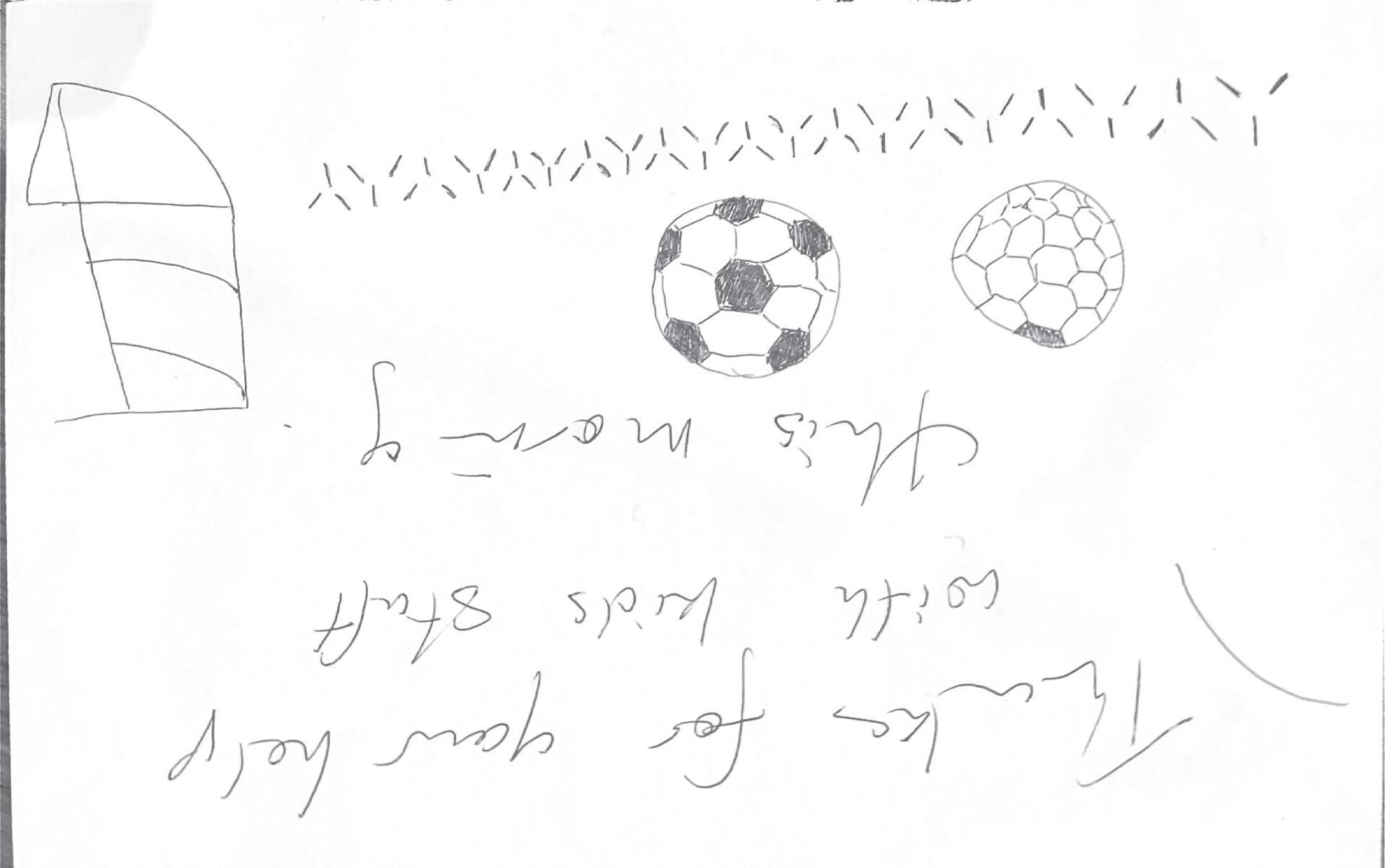

The ‘Organic’ Relationship Fallacy
Jessica
Louise Smith is unfulfilled.
Is it any better to say you met your partner at the Ivy than it is to say you met on Hinge? In the arbitrary point system of the dating world, we’ve somehow given Scary Canary actual skin in the game. Why do we think it’s better to meet the love of your life amongst the hostel guests of Side Bar than on Tinder? Well, it’s the same reason your ‘financially dependent’ friend who lives in an apartment their parents ‘bought as an investment’ in Pyrmont buys the price-gouged zucchinis from Coles — because it’s organic


In an increasingly virtual world, the craze of organic products has surpassed 2010s diet culture and come to dominate Wednesdays at Birdcage (or Sheaf Wednesdays for you heathens out there).
What exactly is an ‘organic relationship’? The term itself is fallacy-filled. The naïve and lovestruck fool would say a relationship can be delineated as ‘organic’ if you meet the subject of your affection in person, period. A lonesome schmuck like myself poses the question of intention, the whole “stop looking for love and it’ll find you” is, in my experience, seldom the truth of the matter. Of course, I
would be the naïve and lovestruck fool to presume love is at the centre of the matter — sure, if you fall in love with the masc you met on Mardi Gras you could count that as an ‘organic’ relationship. Sculling $8 Little Fat Lambs in Hyde Park does make for a fantastic meet cute. But truly? Don’t tell me you wore assless chaps, booked a suite at the Oaks, and packed an emergency strap without considering that you are pioneering the fulfillment of your sexual needs and desires. And power to you! You have a bright future of project management and bottoming ahead of you!
If I wax my legs and wear lacy underwear with the intention of getting laid and then organically meet the guy who “manscaped” and packed a condom he got from an O-Week stall in his wallet in hopes of “getting some”... the average sex we’re having isn’t by coincidence. There is intention and there is execution.
So why is it that we glorify relationships that come out of these, for all intents and purposes, staged interactions, but villainise relationships born from dating apps, praising the former as ‘real’ and the latter as the equivalent of caged eggs?
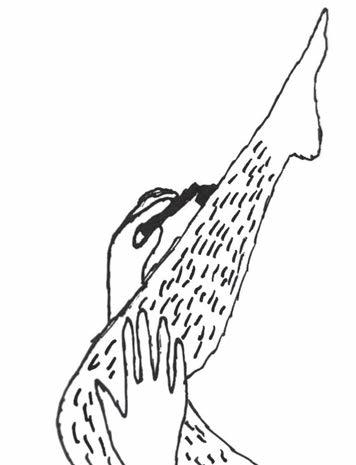
Unfortunately, you’re asking the wrong girl.
The comeuppance of “cuffing season” is hitting this author like a freight train. Thus, I find myself fixing my posture and powdering my nose at Kelly’s on King in hopes an engineering student on a pub crawl will pluck me out of obscurity and fulfil my ‘organic’ fantasies, whisking me away to their Scape apartment and promising to love me forever and ever.

Shayla Zreika is tired of an individualistic world.
With strength at its core, there stands a cedrus libnani in a lush green forest, somewhere in the mountains of my native land up north in AlMinyeh. Upon first glance, you may see a singular tree, armoured in a steady bark with branches of foliage outstretched, a symbol of steadfastness and sufficiency. Then you pause and look to the ground below. You feel the moist soil and the unbreakable nests of roots tunneling in all directions. And as the succulent rays of the yellow sun warms the back of your head, you become acquainted with the cedar tree in all its natural makeshift. It is a friend of the songbirds and spruces and pines, acting not as mere ornaments but nurturers. This cedar tree is one of many which make up the lush green forest, not as a sole being but a kin to its ecosystem.
Likewise, our human nature is upheld by the nourishment of community.
Community is a value grotesquely underappreciated amidst the Western lifestyle of individuality. Here, we strive to achieve a state of hyper-independence and foster individualism — in turn, we neglect the nourishment of community and are left yearning for more. Kinship bonds are blurred in our pursuit to thrive in our singular identities,


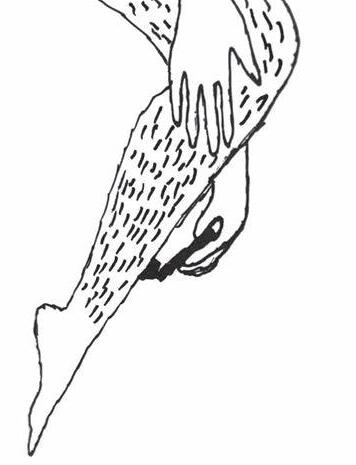
Art by Charlotte Saker
Your Soul Seeks Community
leaving us nauseated with the expectations to construct our most perfect selves. We leave ourselves no room to be strengthened by the aid of our peers, or enlightened by the nurturement of our elders. In the West, dependency is demonised as a liability rather than a simple human tendency.
One of the most quintessential representations of the struggle of individualism is found in one of modern literature’s most tragic analogy’s: Sylvia Plath’s fig tree. It grieves the loss of our potential selves, with the narrator paralysed by the pressure to decide her ultimate fate. As she watches the figs, symbolising a potential life path, begin to rot, Plath essentially captures the overwhelming Western expectation to choose one path, one fruit, and sacrifice all other versions of oneself to wither out of existence.
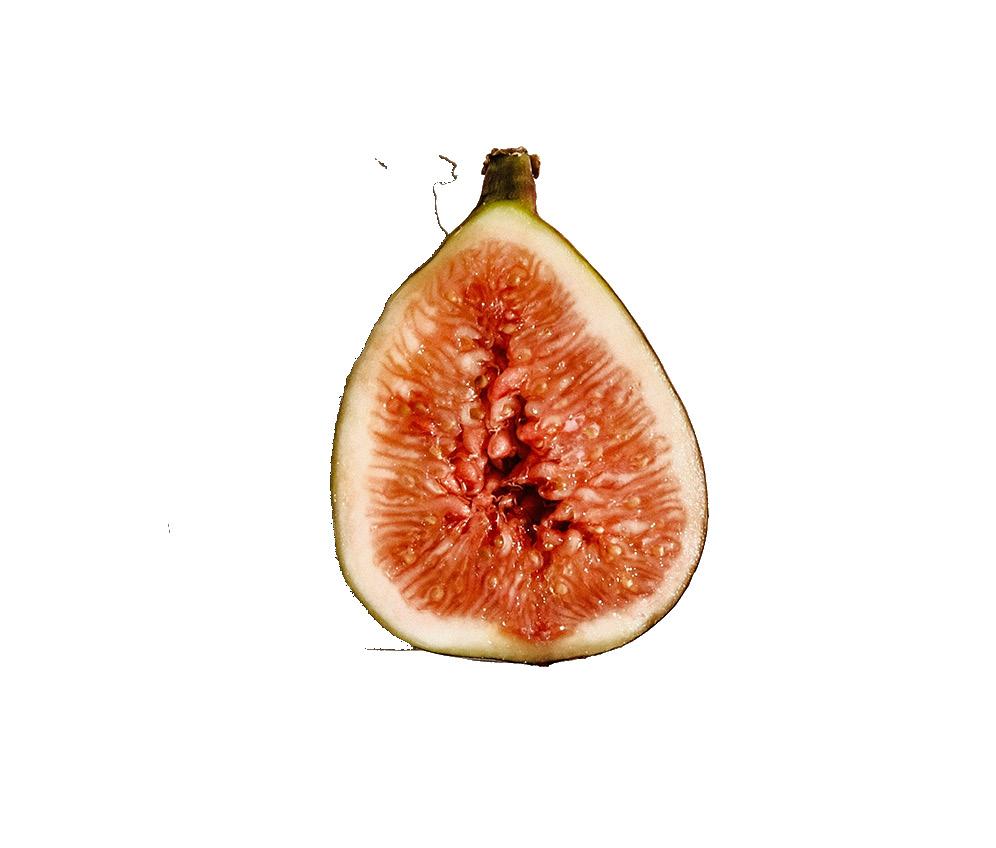
In the West, this fruit is the center of all importance. From a young age, we’re taught that our identity is rooted from a singular origin within ourselves. Our wins are defined by what we accomplish on our own
and our losses which stem from the aid of others. We’re taught to pursue mentorship and tolerance rather than interdependence and empathy. It disregards all other mechanisms of the natural organism and expects oneself to thrive independently — a complete paradox to the human need for belonging. Here, we are taught to be sole beings rather than being a part of a collective. It makes us lonely, unempathetic, and isolated in both our successes and our
In the East, however, the fig tree is regarded as a magnificent body of nature. Not only does it bear milky fruits, but ancient cascades of bark. Its broad hydrated fig leaves shade the soils below, which remain rich in minerals and water to feed the roots and extend this strength across vast orchids and gardens. The fig may be vulnerable in its ripeness, but it is fostered by an entire ecosystem of nurturers. It is sustained by its community.
Within the East and all its intricate traditions is the value of community. It’s not only acceptable, but appreciated, to depend on our neighbours and to return the favour through service.
What you may call pathetic, I call proactive! Celine Dion’s All By Myself will not be infiltrating my Spotify Wrapped if I have anything to do with it. That said, I will not be cheating and downloading Bumble because, I’d rather put my fate in the hands of the world — I will however be conveniently perched by the stairs of the Anderson Stuart Building looking confused and drop-dead gorgeous because proper preparation promotes pussy pals (or however the saying goes). Still counts as organic though! The farming process is just… highly stylised. Good luck finding romance on Raya, you desperate losers, I’ll be buying my $15/ kg organic zucchinis and seductively cooking ratatouille in a shared kitchen space like a sexy Remy the rat.
Growing up in the rich cultural melting pot of Sydney’s south-west, I was constantly surrounded by the influence of Eastern values of community. Collectivism is the heart of traditions across continents and oceans, common amongst neighbours of all backgrounds. In Lebanese culture, my family mirrored collectivism in habitually serving guests before serving themselves. At family gatherings, the hands of our mothers communicate through bright spice mixes and nutty garnishes, feeding one another with the wisdom of recipes. My grandfather picks fresh mint leaves, cucumbers, and radishes from his home garden, savouring the scent of the fresh produce as he places the bowl at the heart of the dinner table for all to enjoy. My father stands at the charcoal barbeque with his mother, grilling trays of skewered meats prepared from the night before. We each play a fundamental role in serving one another and in doing so, uplift each other as valued members of a community.
For all the practices of community which continue to be passed down onto generations, one finds solace in the state of trusted interdependency. You and I are cherished members of a community — a part of the force of nature which fosters this gifting ecosystem.
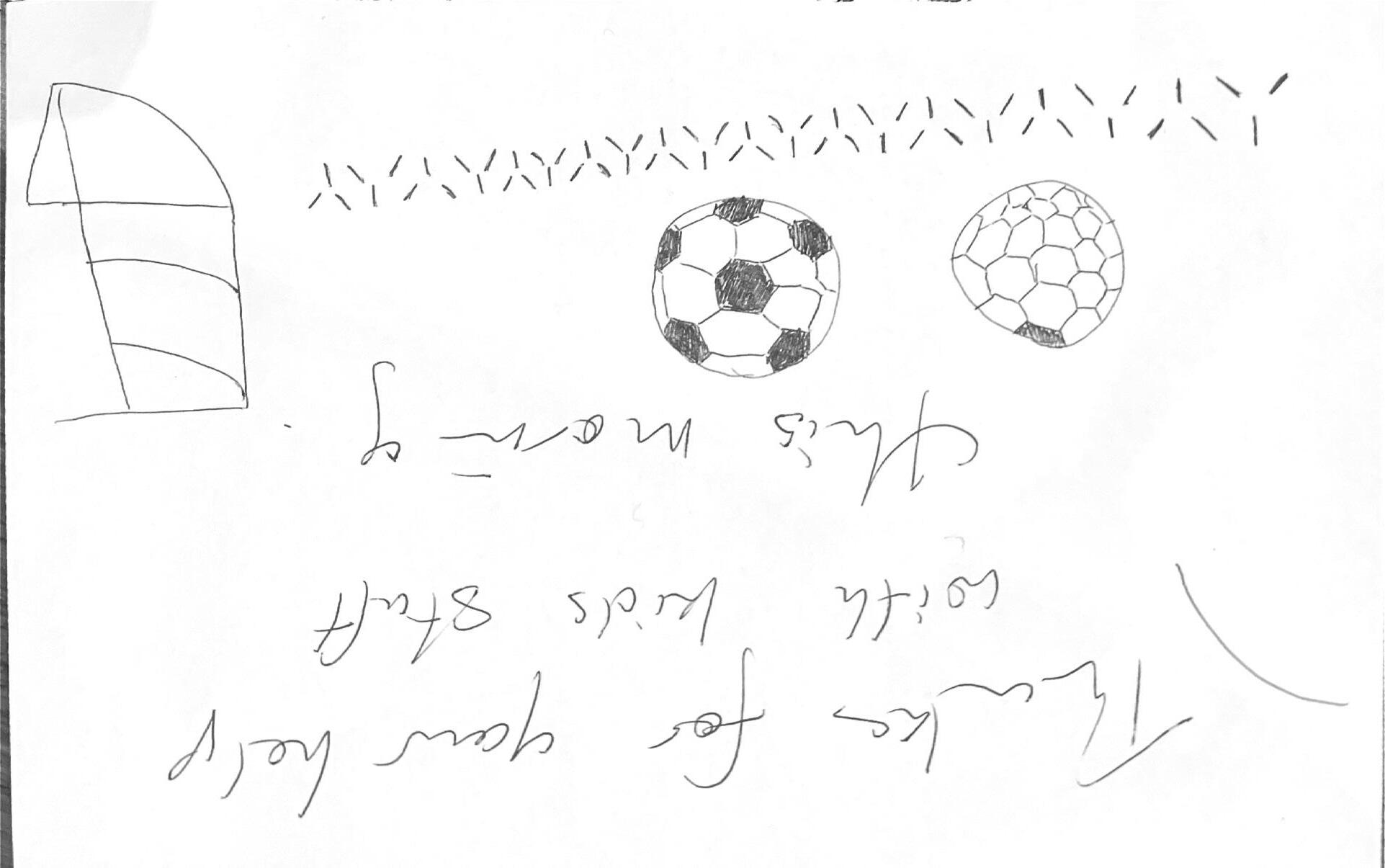




Yearning For Silence
Charlotte Saker has tinnitus.
Content warning: Suicidal Ideation
I am a very scared person. Taking a lift makes me sweat more than the stairs, driving feels like a death sentence and before I share drinks with anybody I ask them two questions: do you have mouth herpes and do you have glandular fever? They always say ‘no,’ but sometimes when they hand me their drink, I hold it for ten seconds, keep talking to them while sweat coagulates on my palms, and then I give it back. The rats in my head scream ‘Let’s not risk it.’
One fateful day, I found myself in a situation that I couldn’t escape from by taking the stairs, relying on public transport or giving a drink back. In early November 2024, I developed tinnitus. If you’ve never heard of it (pun intended), it’s ringing in the ears, which you’ve likely experienced after a rowdy night at your friendof-a-friend’s Newtown houseparty. The raging party in your ears tends to wear off by morning, leaving you only with vomit breath and a bout of hangxiety. But for me, silence became a luxury I could no longer afford.
It began with a quietly devious ear infection. My left ear felt like a wax candle, I’d picked at it a little too much, and the dull ache that usually vanished in a day just…didn’t.
I can pinpoint the exact moment









my tinnitus started. I was hunched over my glass desk at around 4pm on a Monday, trying to finish an assignment without looking at my phone, when suddenly a light that had only just been found in the house of horrors that is my brain, flicked on, and there it was: a faint, high-pitched ring appeared in my left ear. It grew louder, paired with the feeling of my ear being blocked. The next morning I was on antibiotics, and within three days the infection cleared. A nurse syringed the wax from my ear, and for a moment, I thought the ringing was gone. But no, the blockage had made it seem louder; the sound itself had never left.
beep that came from my right ear, despite the infection occurring in the left. I began climbing the great pyramid of doctors: three GPs, one audiologist, two ear-nose-throat specialists (ENT), an osteopath and finally a therapist. My hearing was fine, but the first ENT sent me for an MRI “just in case.” The scan was clear, except for a highriding vein near my ear I’d apparently had all my life, that he thought could be causing it. He then hit me with it: “There’s nothing I can do. You’ll have to learn to live with it.”
What a mind game it all was, for tinnitus does not necessarily come from the ear, but the brain.
And my brain was begging for the off switch that no doctor, no God, nor I, could find.
The GP told me, “Give it three months, then freak out” (by that he meant see an audiologist). I went home with a spring in my step because I had hoped it would fade. Only a couple weeks later, I was replaying the infection over and over, wondering if I’d ruined my body with one small mistake. Was this my life now?
The ringing was constant, only masked by daytime noise. At night it was a cage of static and high pitched
The Spaces in Between
Kiah Nanavati is lost and found.
I live in between spaces.
The spaces could be construed as a hole in my heart, or two massive oceans that echo the distance between my hometown and the place I moved to. The spaces exist not only on maps, but in memory, in time zones, in the strange pauses when people in a foreign city ask me, “Where are you from?” and I hesitate.
Because the truth is complicated. Because “from” is no longer a fixed point, but a constellation of places that formed me — and yet, none of them quite claim me.
I have two homes. The one where I grew up, it taught me to be brave enough to move away and create a whole new life… the other home, Sydney, moulded me into the person you see today. Whenever I smell the aroma of ginger and turmeric making its presence through the kitchen to the dining table, I think of my hometown and that feeling is nostalgic, enough to make me smile. But when I smell the salt air in summer, or feel the cold breeze in winter, I think of Sydney and feel inspired, to be a part of something big that can shift perspectives around the world. That also comes with expectations and
burden to make it through university and the tedious process of finding jobs that fit my capabilities.
Nevertheless, in both I’ve felt comfort and alienation in equal measure; but does that really define what a ‘home’ is?
At first, I tried to bridge the two — to carry one world into the other like contraband tucked in my suitcase: spices, childhood photos, fragments of language, the feeling of waking up in a bed that I’ve been accustomed to since I was merely a child, laughing with my friends as we unbutton our pants trying to fit in the godly amount of local food in every suburb of our town. But slowly, the things I carried started to feel heavy. Mispronounced names. Untranslatable memories. I realised I wasn’t trying to bring home with me; I was trying to prove it still existed.
And yet, neither place feels like mine anymore. When I return to my hometown, I am treated like a guest. I fumble with currency, speak with a different cadence, and get laughed at for not knowing how to navigate the local public transport system. When I walk the streets of my new city, I blend in until I open my mouth or
For two weeks after that phone call, I didn’t eat, I didn’t sleep, I had several panic attacks a day, I cried for hours on end, I lost weight and my skin turned to bone, I had to take sleeping pills. The tinnitus only grew louder, more high-pitched, more intense, I couldn’t escape, I wanted to rip my hair out and bleed to death. I was running from my shadow, I wanted to kill my shadow, nothing scared me more than a quiet room, nothing scared me more than knowing I would have to go to my bed at night, put my head to my tear-soaked pillow and drown in this evil sound, masking it with my cries. I felt so alone, no one could fathom my Hell, I thought God
was punishing me, I begged the doctor to put me on antidepressants because I didn’t know if I’d live to see next month. What a mind game it all was, for tinnitus does not necessarily come from the ear, but the brain. And my brain was begging for the off switch that no doctor, no God, nor I, could find.
So, I turned to Facebook groups. They were full of older people searching for a cure, and then there was me — 20, reeling from a simple ear infection. Reading their posts was both terrifying and comforting; terrifying because so many had been living with it for decades, comforting because I wasn’t the only one pacing the room at night, hands pressed to my ears, wishing for silence. People shared little survival tips, masking sounds, meditation tracks, earplugs, and, more importantly, they reassured me that my brain could adapt.
A second ENT gave me the first real lifeline: in my case, she believed it might fade with time. Whether or not that turns out to be true, her words finally made me feel safe. I started keeping notes, tracking the days it was softer, not just the days it roared. I learned that when it spiked, panicking only made it worse. So I embraced it, and in turn it softened and faded into the background.
I’m still a very scared person, but with great fear comes great courage. You just have to hold on long enough to see it.
Read all full articles online.
reveal the awkward timeline of my cultural references. “Oh, you’re not from here, are you?”
No, I’m not. I’m from elsewhere. I’m from the in-between.
So what is the ‘in-between?’ It came with the ease of realising that I didn’t need a singular place to call home. The idea felt increasingly distant, as though I were chasing a mirage. What I longed for wasn’t one fixed location but a sense of belonging, of ease, of groundedness, of being known without needing to explain.
But that kind of belonging has always eluded me. So instead, I turned toward something quieter. Toward solitude. Toward the wild.
There’s a moment on long hikes, deep into wilderness, where the noise of the mind begins to unravel. At first, it’s disorienting. Then it’s liberating. The categories we spend our lives upholding — nationality, race, class, even personality — begin to blur, and what remains is something raw and tender. You don’t feel like a citizen or a migrant. You feel human, because isn’t the entire point of being human to be free?
Out there, I stop craving answers. I stop explaining where I’m from. I stop trying to fill up the hole because it doesn’t need effort, it just needs solitude.
This revelation occurred when I went back to my hometown and I felt something was amiss. I couldn’t quite put my finger on it, I wanted to escape. I travelled to Queensland and lived on a boat for five days without any connection to the outside world. My only worry was not being able to spot diverse marine life but that proved to be unwarranted.
The minute I spotted sharks circling my boat or the turtles swimming effortlessly with me, I no longer thought of this trip as an escape, I thought of it as… the ‘inbetween.’
Because maybe the in-between isn’t a gap, or a failure to choose. Maybe it’s a threshold. A fertile, untamed space where identities overlap, transform, dissolve. And maybe, belonging isn’t something we find, but something we feel in moments.
So when people ask me now where I’m from, I still hesitate. But the silence feels different. It’s not an absence. It’s a feeling I wish to holfd onto forever.









Sex: if we’re not doing it, we’re thinking about it. These students, speaking anonymously, talk honestly about the thing we’re least honest about. Sabrina*, an accused hypersexual, and Beth*, a borderline asexual, discuss masturbation, men, and irresistible couches.
Beth: How would you describe your sexuality?
Sabrina: Okay, I would describe it as straight. However, I watch lesbian porn. I’m straight to the world and a little bit gay to myself.
B: Why do you watch lesbian porn?
S: I enjoy it. Sometimes when I see men in porn they stress me out, because a lot of the time they’re extremely violent towards the woman, and women just look better.
B: I agree with that. I don’t actually watch porn; if I did, it would be lesbian porn, but I don’t, because I worry about the exploitation of people in pornography, so I read it.
S: When I feel more romantic, I’ll read smut, and when I just feel like a whorebag, I’ll watch porn. But even when I read smut I don’t even masturbate. I just get turned on. That’s enough for me.
B: Yeah, okay. I don’t masturbate very often, but when I do, it doesn’t really work.
S: When was the first time you tried?
B: When I was 16 or 17. I was like, if this doesn’t work out, I’m just gonna wait like, a year. So I did, and I tried again when I was 17, and again when I was 18. I’d try once a year, give it a halfhearted effort, and then nothing would happen. I’d be like, “Okay, that was a waste of time, I’m not gonna bother.”
S: Why would you wait one year in between?
B: Because the thought of masturbation didn’t appeal to me at all; it felt like something I would have to get into eventually, because everybody else was doing it, but I didn’t, because I didn’t get any pleasure from it.
S: Do you feel like it was the peer pressure that made you do it?
B: I think part of it was less peer pressure and more curiosity. Like, I’m not very susceptible to peer pressure, but everyone says that it’s fun, so surely there’s something that I’m missing, right? How were you first exposed to masturbation?
S: I was very, very young, like four or five years old.
B: Holy shit!
S: I didn’t know what I was doing. I think one day, I rubbed myself against something, furniture, and it felt good, and I had no clue what I was doing, I kept doing it. At the beginning, I did it in front of my family, because I just didn’t know.
B: Oh my God.
S: Then I got a bit older, maybe I was seven or eight, and I began to think “I feel like this is something I should do in private.” I got to 12 or 13, and I got on like the internet and people would talk about this thing called masturbation. I was like, wait a fucking minute. I’ve been doing this since I was a wee child. I didn’t know what I was doing, so much so that I thought I wouldn’t get my period, because I thought I was, like, ruining my vagina, I just did not know this was natural.
B: I didn’t know about masturbation before I went through sex education. I was like, that sounds terrible. Why would anyone be sticking things there? When I learned about sex, it just sounded objectively disgusting.
S: It is disgusting, but humans are disgusting. That’s the thing. You get pleasure out of the disgust. Okay, as a lesbian, what are your thoughts on giving and receiving head?
B: I don’t like oral sex as a concept. When I first discovered it, it was the idea of a woman giving a man head. That sounded awful. I would rather eat a wet, live frog. The idea of women giving each other head, I still don’t really get it. I would probably be nice if you were receiving head, but I still wouldn’t want to, you know. You should be eating food. People’s bodies are not food. What I have discovered recently is that sex is just kind of available when you want it.
S: That’s true, men will fuck anything. Men have horrible taste.
B: What was your first sex toy?
S: I think it was my 19th birthday. My friends pitched in together to buy me a vibrator. It was a long pink penis with bunny ears coming out of it. Then I got this anal one, which I have not used, but I just felt like getting it, because why not? I’ve never done anal by the way. I mostly use my hand, and I used to use furniture all the time. I broke my couch once, actually. The side bit with the wood. I just rubbed against it over the years. I would be in year 12, I’d be studying and stressed, then I’d go to the couch, have a wank for literally 40 seconds, come back, study for five minutes. Do it again for one minute. Come back.
B: Wow. I got my first vibrator last year, because I was trying to work out how to deal with sexual frustration.
S: When you say you were sexually frustrated, how were you frustrated?
B: I hadn’t had sex before, and so I felt like if I got a vibrator, that would be at least the first step. And it would also be a good way to experiment, because
Beth and Sabrina get down & dirty.
In Conversation with a Borderline Asexual and a “Hypersexual”
I don’t want to experiment with some sweaty person who doesn’t know what they’re doing.
S: Literally. Have you ever had an orgasm?
B: No. When was your first orgasm?
S: When I was four or five? I actually really struggle to have an orgasm sometimes, but when I do, they’re really good. I’ve never had an orgasm with another person, but I do on my own. it’s like you’re climbing a mountain, and then you get to the top, and it’s just this rush of pleasure. Your clit has thousands of nerves in it, it’s just this very bright feeling. I once came on a plane, and it was the best orgasm of my life, because I was so fucking anxious on that plane, the turbulence was insane.
B: Oh, it’s like the vibrations.
S: Yeah, the anxiety that I had transferred into it and turned into an orgasm. I’m curious, do you not want to be a virgin? Do you feel pressured?
B: I don’t really feel pressured. Because if anyone tried to pressure me, I’d, like, punch them.
S: Kill them with a gun.
B: And I don’t feel the need to lose my virginity, because I think having sex is only worthwhile if the sex is decent, and I could have bad sex anytime I wanted to. What would your ideal sex involve?
S: Oh, lots and lots of foreplay. Before you even kiss, that’s foreplay. Men don’t get it. I count kissing onwards as not foreplay anymore, like we’re getting to the sex. But they don’t. They think kissing is foreplay. They think fingering and eating out is foreplay. Like, shut the fuck up!
B: How do you feel about head?
S: I’m happy to give head. I’m happy to receive head. I always have baby wipes around me because I want to be as clean as possible. It’s fun, sloppy, and then we can get into it. I don’t always like doing penis and vagina, so it just depends how I feel.
B: What kind of kinks do you have?
S: Oh, degradation and praise. Like, I want to be degraded, but I also want to degrade them, which is why I have a lot of hate sex. Hate sex is really hot. If can’t have love sex, the second best is hate sex, because there’s still just as
much passion. Okay, let’s talk more about you. How do you know you’re on the ace spectrum?
B: When I was 16 I saw Mahler’s Hierarchy of Needs, and at the bottom of the hierarchy, it said you need sex to survive. I was like, what is this? It seemed like a joke. Who needs sex to survive? That’s insane. Like, I need sex like a fish needs a bicycle.
S: I wish I was you. I need sex like a fish needs water. I sometimes wish I didn’t have a sex drive.
B: I feel like I’ve gotten a lot done because I have no sex drive. I like feeling good by getting shit done. It gives me satisfaction, but not sexual satisfaction.
S: Do you wish you had a sex drive?
B: No. I think I could… I could get really turned on in a very, very, very specific set of circumstances that I’m not gonna run into for a long time. If I was in a professional work environment, and then I met someone else who was at my level, or maybe higher up, and that person was hot and also really interested in me and smart and good at their job, and they invited me to their house, they made dinner for me, showered me with affection, gave me lots and lots of attention, and then they, I don’t know, put rose petals on a bed, put smooth jazz on, I don’t know what people do, but if they just put lots and lots of effort in, I could get turned on
S: Oh my god. Okay, your standards are perfect. Do you enjoy kissing?
B: Honestly, not that much. Everyone goes on about sex just as much, more than they go on about kissing.
S: You need someone you like. Sex is so much better when you really like or love the person. My favourite thing is everything around sex without actually doing it. So talking about sex, play before sex. You know you’re gonna have sex, but you’re not doing it yet, but you know it’s coming.
B: Anticipation is almost better than the real thing.
S: That’s what I mean. With the anticipation you have nothing to lose. Women tend to love everything around sex, and men love sex itself. One day we will have lesbian sex. I would have to be really, really drunk.
B: I would also have to be really drunk.
SRC Elections
Notice of the 2025 Annual Elections for the Students’ Representative Council
All University of Sydney students enrolled in undergraduate degrees or diplomas, or as other non-degree students, are eligible to vote in or nominate for the Annual Elections.
Nominations are called for the following elections/positions:
Nominations will be accepted online from 9:00am 4 August 2025 via the SRC nominations page: bit.ly/SRC-noms. The close of nominations shall be at 11:59pm 17 August 2025. For more information on how to nominate, please refer to the Candidate Information Pack available on the SRC website at: bit.ly/SRC-noms.



On-campus polling will be held on 23, 24, & 25 September 2025.
• Jane Foss Russell: Tues–Thurs 8:45am – 5:15pm
• Fisher Library: Wed & Thurs 8:45am – 5:15pm
• Manning House: Wed 10:45am – 3:15pm
• Conservatorium of Music: Wed 10:30am – 3:30pm
• Susan Wakil Health Building: Thurs 10:45am – 3:15pm
• Peter Nicol Russell Building: Thurs 10:45am – 3:15pm
Voters who are unable to vote in-person at the specified times above are able to request an online absentee vote via bit.ly/SRC-vote
The SRC Elections are conducted according to the SRC Constitution & Regulations, which are available here: bit.ly/SRC-regs. Appeals to the decisions of the EO can be directed to the ELA via srcela@src.usyd.edu.au
For further information, please contact the Electoral Officer via elections@src.usyd.edu.au.
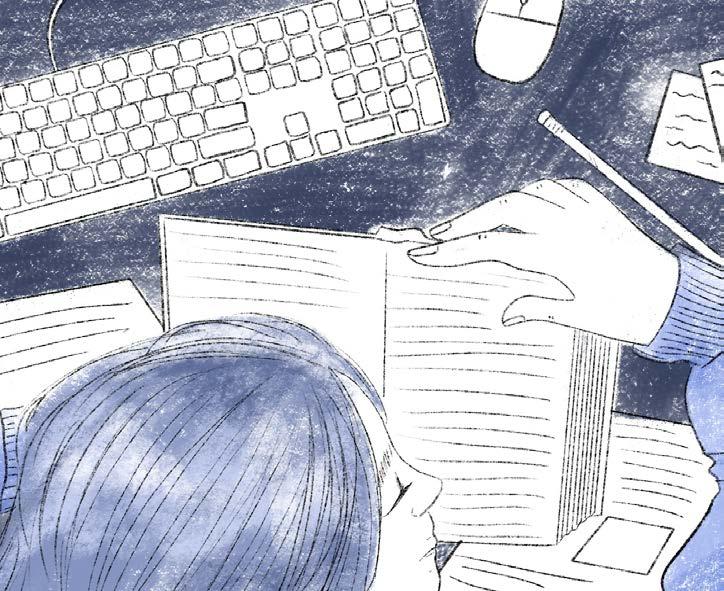

President
Angus Fisher
We’ve only been back at uni for a week and I’m already exhausted. Take a breather and read what I’ve been up to.
I joined The March for Humanity, which saw thousands of students join a nationwide call to end Australia’s complicity in the genocide of Palestinians. It was inspiring to witness such unity and determination from young people demanding that our government cut ties with Israel and stop the genocide. Last Thursday, the SRC also joined the NUS’ National Strike for Palestine, where students across the country walked out in solidarity. Next, we’re preparing for the National Student Referendum on Palestine, running August 20 to 28. More details soon.
SSAF consultation meetings have begun, bringing together student organisations and the DVC Education to decide next year’s funding allocations (our budget). While it’s already been indicated that the base uplift will be minimal, I’m
pushing for 2025 short-term projects to be made permanent, such as adding a new caseworker to our permanent staffing. These discussions will be critical in ensuring the SRC can maintain and expand services for students and engage in meaningful campaigns, despite tight funding conditions, and I’m determined to secure meaningful outcomes for our organisation.
I joined the “Campus Collaboration Conversation” meeting, organised by the Office of General Counsel, to discuss the university’s adoption of an antisemitism definition. I argued firmly against it, warning that it could silence pro-Palestine speech and harm students. I stressed that such definitions reflect the norms of the time. Note that less than two years ago, calling Israel’s actions “genocide” was heavily contested. Because of this, codified definitions risk becoming outdated and oppressive, making them dangerous tools in academic and activist spaces.
General Secretary
Grace Street, Anu Ujin-Khulan
Welcome Fest Semester 2 was a success, with both us spending the two days across our SRC and collective stalls. Students love our ‘real student handbook’, and custom SRC pens and phone wallets from last semester. We have also been filming and editing lots of videos for the SRC social media to promote our work, resources, and opportunities to get involved.
Grace has been on the team talking with our SRC staff to work towards their new Enterprise Agreement, and her SRC Week preparations are ongoing for Week 3! Grace represented the SRC and joined on the buses we helped to subsidise for the Convergence on Canberra, and
recently spoke at the Sydney/Gadigal rally of the National Student Strike for Palestine. During this period, Anu mainly contributed to preparing merchandise for international students. She also supported early preparations for upcoming semester events, including helping with planning and social media engagement. While they received strong media attention, it’s equally important to focus on creating a meaningful and supportive community.
Our SSAF applications are coming up soon, and we will be working with exec and our departments to apply for the funds that we need for our 2026 SRC services and projects!
Disabilities Officers
Remy Lebreton, Vince Tafea
DisCo has kicked off this semester with a brand new set of fortnightly organising meeting times! We will meet on Wednesday at 12pm every even week! (2, 4, 6, etc!) If you are wondering what these meetings involve, the disabilities collective has Hybrid (In-Person + Zoom) meetings in which we, as students with disabilities, organise around disability justice at Sydney University and beyond! BDS friendly snacks and drinks provided! Message the @usyddisabilities instagram page to get involved :)
The Disabilities Collective and its conveners were in proud attendance of the harbour bridge march for humanity! This was a historic moment in the struggle for palestine, but we must continue to push harder than ever before for sanctions and an end to the genocide, and so we implore you to get involved with organising on campus and in your community! Any little bit you can give to the movement helps!
QuAC is back for Sem 2!
Over break, QuAC members participated in Pride in Protest’s conference Provocations, speaking on the Campus Access Policy, sex worker rights, and discrimination against queer refugees.
QuAC members also spoke at the People’s Inquiry into Campus Free Speech on Palestine, recounting repression and intimidation from campus security and how USYD targets students for being queer, disabled, sex workers, and/or international students. Trans asylum seeker Luna spoke publicly for the first time since USYD threatened her with deportation last semester. The student movement for Palestine must continue to grow to combat USYD doubling down on Zionism, and we intend to tackle the university’s pinkwashing every step of the way.
We also held Queers for Palestine contingents to the Harbour Bridge March for Humanity and the National Student Strike for Palestine last week.
Shamefully the USU had neglected to inform us the elevator in the manning house was out of commission for several months, and they had been turning away students who needed to access the upper levels. This is shameful already, but particularly so as the Khanh Tran Disabilities Community Room is located on its middle level. We apologise that this had not come to our attention sooner, and will endeavour to keep watch and ensure accessibility is not an afterthought on campus.
Finally, stay tuned for the upcoming disabilities music festival and panel on the strengths and pitfalls of the human rights model of disability (particularly against the backdrop of the rise of the far right) coming in disability inclusion week!
Wendy Thompson
A month ago, NSW Police murdered 45-year-old gay man Collin Burling outside his home while his partner filmed. We are saddened and angered at this tragedy and the continuous deaths in custody on this continent. We participated in a memorial rally and march for Collin and Jesse Deacon, who was murdered by NSW Police in the same week two years ago. We must keep pushing for abolition on our campuses and across so-called “Australia.”
Self-ID has come into effect, and we participated in a public form-signing event on Saturday to help people update their legal gender markers. If you missed it, pick up the forms from our SRC week stall!
Join QuAC this Wednesday (13/8) at 6pm in the Queerspace! We’ll be watching the movie Pride (about a critical moment in queer and unionist history), eating pizza, and then heading to Birdcage!
Social Justice Officers
Aron Khuc, Lauren Finlayson, Yoshi Leung, Leo Moore
Hi all! We hope that everyone had a restful semester break. The social justice officers have attended the historic march across the Harbour Bridge to call on the Australian Labor government to sanction Israel for the man-made starvation of Palestinians in the Gaza Strip. We’re proud to have marched alongside up to 300,000 people in the pouring rain, defying Chris Minns and the NSW police’s attempts to shut down the protest. We also attended the National Students Strike
Out for Gaza on the 7th for not only for the Labor government to sanction Israel but also for our universities to remove policies like the Campus Access Policy and to cut ties with weapons companies. For the following weeks, we will be organising the National Student Referendum on Palestine for students to officially vote for the Australian government to sanction Israel and to call for universities to cut all ties with weapon companies.
Student Accom Officers
Misheel Galkhuu, Connie Wong, Jason Xu, Yuxuan Wang
Hello and welcome to Usyd, I hope you’ve enjoyed winter breaks and are ready for the new semester if you’re new here.
This year’s Student Accommodation Officers are Connie Wong, Jason Xu, Yu Xuan and myself (Misheel Galkhuu) So far, we’ve attended Safer Communities Advisory Group meetings and endorsing 2025 Graema de Graaff-Lauris Elms Roundtable event by SUIHAA. As the practice goes we’re aware of the spiking of the third-party housing and limited accommodation options for new students.
Student accommodation operating under the university is simply too scarce to meet the huge demand necessary. Those who wish to secure a spot in Queen Mary Building or other accommodations with rent under $400 need to apply at least a year in advance; otherwise, they may
remain on the waitlist for quite some time. When it comes to third party providers, there are often unfair business practices — we recently dealt with a case where an international student paid rent in advance to secure availability and was required to pay a four-week bond plus four weeks’ rent upfront. Later, they discovered pest issues and other problems with the accommodation.
This year, we will continue advocating for the urgent redevelopment of International House (IH). You may have heard of IH— it was closed back in 2020, and has been a great space for accommodation wasted since. Additionally, we are here to support students facing challenges related to accommodation! Feel free to reach out to us any time at our email: student. housing@src.usyd.edu.au.
Applying for a
‘Discontinue Not to Count as Fail’ (DC)

If you have not been able to complete a subject because you have experienced circumstances (e.g., illness, injury, or misadventure) that were outside of your control, you can apply for a Discontinue Not to Count as Fail (DC) grade. If your application is successful that unit will be recorded as a DC, which means there is no academic penalty, and it will not change your WAM. You also do not need to pay HECS/fees for that unit.
There are three parts to the application:
1. Your written statement
2. Your supporting documentation
3. The online form, however this form does not explain the application requirements in detail. Please read the following information carefully as this covers the criteria used to assess your application. Where the form asks for the reasons you are applying, write, “see attached statement”.
There are some very specific criteria that a DC application must address. You will need to provide formal supporting documentation (e.g., a Professional Practitioner’s Certificate) from a third party (e.g., doctor; psychologist; or psychiatrist). The documentation also needs to be verifiable. That means that the University needs to be able to contact the practitioner to check that it is genuine. Usually that means someone in Australia who is registered with the Australian Health Practitioner Regulations Agency. If your supporting documentation is from an overseas practitioner, ask an SRC Caseworker what your best options are.
Your documentation is the most important part of your application. Without the correct documentation your application will not be successful. Unfortunately, a student declaration is not considered enough to support your application.
Both your written statement and your supporting documentation should specify the affected unit/s of study and set out the reasons why your circumstances:
(i) were beyond your reasonable control;
(ii) did not make their full impact until on or after census date;
(iii) made it impracticable for you to complete the affected unit/s;
(iv) could not be addressed by special consideration or disability adjustments, and
(v) if you successfully completed other unit/s, explain why only the affected unit/s were impacted.
If you did not complete an assessment, you either need to have applied for special consideration or your supporting document needs to explain why you did not apply for special consideration. If you are applying more than 12 months after the end of that teaching period, your supporting documentation will also need to explain why you were not able to apply until now. Not knowing about the DC process is not considered a good enough reason. If you have completed all the assessments for a unit, it is unlikely the University will grant you a DC grade.
If you want to apply for a DC grade or if you have already applied for a DC and have not been successful, you can contact an SRC Caseworker to see what your options are.
If you need help and advice from an SRC Caseworker, start an enquiry here. bit.ly/contact-a-caseworker
Ask Abe
SRC Caseworker Help Q&A Bursaries, Scholarships & Interest Free loans
Dear Abe,
I’m really struggling with the cost of living. I can’t work many hours a week as I’m studying full time. I have an unpaid placement next week and I don’t know how I’ll afford rent. Is there anything you can suggest?
JS
Dear JS,
Domestic students might be eligible for Centrelink benefits. The SRC website has information on Centrelink Payments for Students and a Living on Little Money article (linked below) that

you might find helpful. The University has bursaries, scholarships, and interest free loans that might help. Taking on too much could cause you to fail classes, so you may finish your degree quicker by reducing your study to part-time, or taking a break and coming back when you are ready.
If you would like to discuss these or other options, you contact an SRC Caseworker through the online contact form bit. ly/contact-a-caseworker, or by calling 02 9660 5222. Abe.
For more information see the SRC Guide to Living on Little Money bit.ly/living-on-little-money

The close of nominations shall be at 11:59pm 17 August 2025. For more information on how to nominate, please refer to the Candidate Information Pack available on the SRC website at: bit.ly/SRC-noms


‘Quick’ Crossword
Across
2 Computer program for mechanic engineers and architects? (3)
4 ___ worms (3,2)
6 Annual fact book (7)
8 “We’ll change henceforth the old ___” (9)
10 Stubborn dirt (5)
11 German brewer Bernhard (5)
13 “For ___ in revolt now thunders!” (7)
14 Assails (3,2)
16 Play to the audience (7)
1 Maui neighbor (5)
2 USyd campus for Vet Sci students (6)
3 Do’s and ___ (5)
4 Uproar (7)
5 It may be blind? (5)
6 Rousing call for revolutionaries or the sleep deprived (5)
7 Reef stuff (5)
8 Like NAFTA (5,4)
Semester 2 Week 1 Crossword Answers
18 What is to be done? State and Revolution (5)
20 “Spurn the dust to win the ___” (5)
21 Where you lodge an unfair dismissal claim (3)
22 Post-Q Queue? (5)
23 First instruction (4,1)
25 Intifada (6)
27 Saxophonist great, familiarly (5)
29 More than forgetful (7)
30 How to read a bar code? (5)
9 Zero bars on a cellphone (2,7)
10 Zoomers (3,4)
12 He made the Kessel Run in less than 12 parsecs (3,4)
13 American singer Bonnie (5)
15 Words on a spine (5)
16 Guitar and amp maker (3)
17 Wobbly (3)
19 Kook or almond (3)
32 Unnamed partners? (3,2)
33 Where one draws the line? (3,3,3)
35 “Arise ye workers from your ___” (7)
36 “ Though cowards flinch and traitors ____” (5)
37 Standardised testing for North American would be postgrads? (3)
24 Author Nin (5)
25 Exploited by landlords (7)
26 Ewoks’ forest moon (5)
28 Ltr. accompaniers (5)
29 Newspaper in California’s Central Valley, familiarly (3,3)
31 Wounded by jellyfish or bee (5)
34 “___ trifle!” (1,4)

Across (by individual row): ABC, Say Hi, Peasant, Classical, Naan, Open, Mercy, Grain, Trio, Norm, Education, One Putt, Greco, Ark Down (by individual column): Abyss, AAAs, Chai, Sean Young, Incognito, Placido, Taproot, Carre, Learn, Net, Nim, Cera, Apers, Tuck
Spilling Sounds
Civic video band
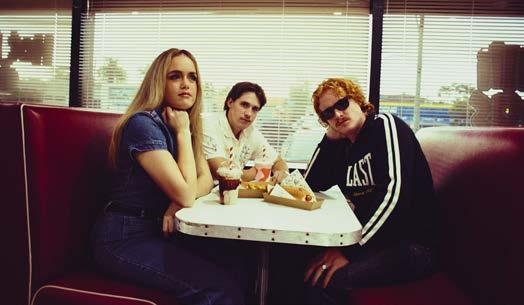
Civic Video are a Sydney-based band, known for their indie rock sound.
After selling out their first ticketed headline event at the Lansdowne, the trio haven’t lost their mojo with new music being released consistently through 2024/25.
Sounding impressively similar to the likes of Spacey Jane and Lime Cordiale, Civic Video are taking the Aussie indie rock scene by storm.
With their latest single, ‘Melbourne’, being received incredibly well by their listeners and beyond, they have continued to build their headbopping fanbase.
Keep an eye out for the release of the bands new song ‘Interstate 95’ on the 20th August.

Check out the band on Spotify here!
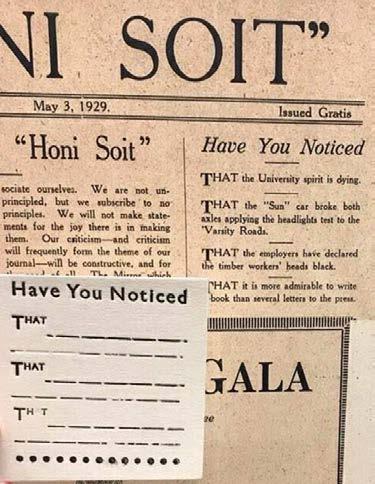
Honi Soit in 1929: Have You Noticed?
Our very own Publications Manager Mickie Quick reproduced on a printing press the column Have You Noticed.
For those who were lucky enough to visit Mickie in the Fisher Library residency in 2023, you had the opportunity to hand print your very own Have You Noticed card.
What did you yearn for today?
Date: __ / __ / __

Special Buys Bad. Same.
A Reasonably Priced HSP
Seriously why does it cost more than $20 for a regular sized HSP anywhere except in the west?
Leftover Roots
Someone pulled these out recently and just left them here.

City to Surf Medal
So everyone knows why your shoulders are lobster red for the next six weeks.
Approved Flags on Campus

A Female Australian Police Commissioner
So now there’s no more sexism in the police force. Or homophobia. Or racism. Yay! We fixed it guys.
“Smelling” “Salts”











STU DENT JO URNALISM CON FERENCE
15 – 18 August | USyd | Free admission THIS WEEK!












Kate McClymont Antony Loewenstein
Sophie McNeill Benjamin Law Shankari Chandran
Melina Marchetta Cathy Wilcox Nour Haydar
